Notable Events - 1936
Home Page / Hucknall Byron / Art Deco Home / Hucknall Cinemas / Byron Film Listings
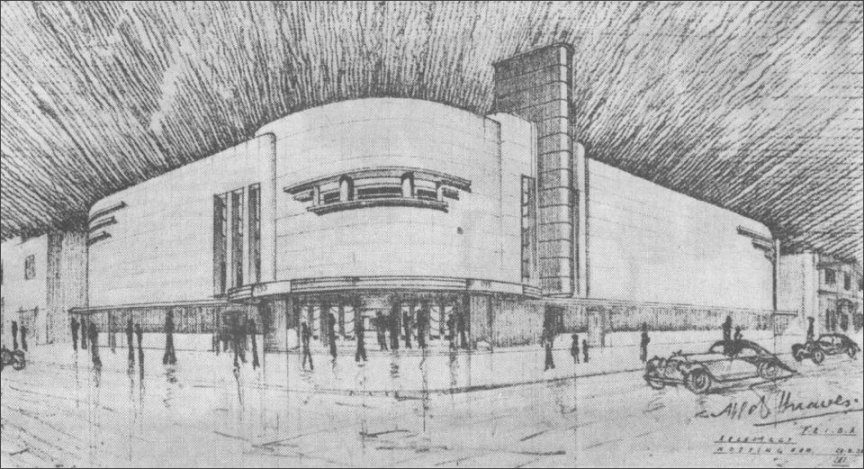
The Architect, Alfred J Thraves, vision of the Byron - this picture even shows his signature on the finished product!
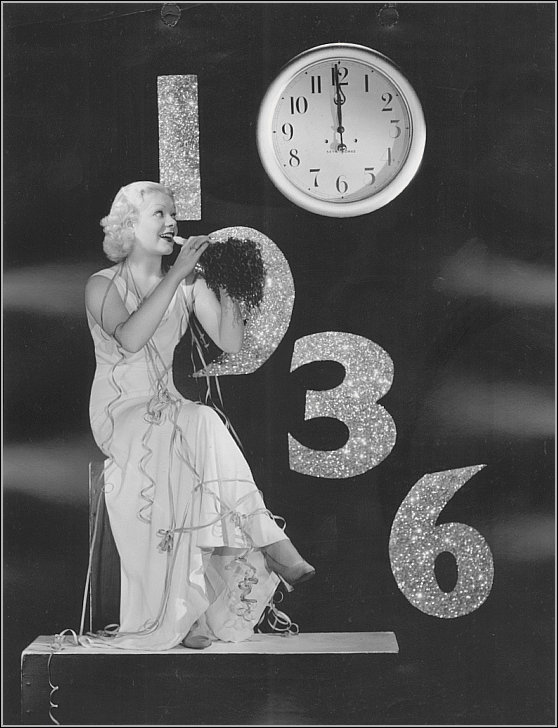
Image of Alice Faye greeting us and wishing us a Happy New Year as 1936 dawns - courtesy and © of 20th Century Fox
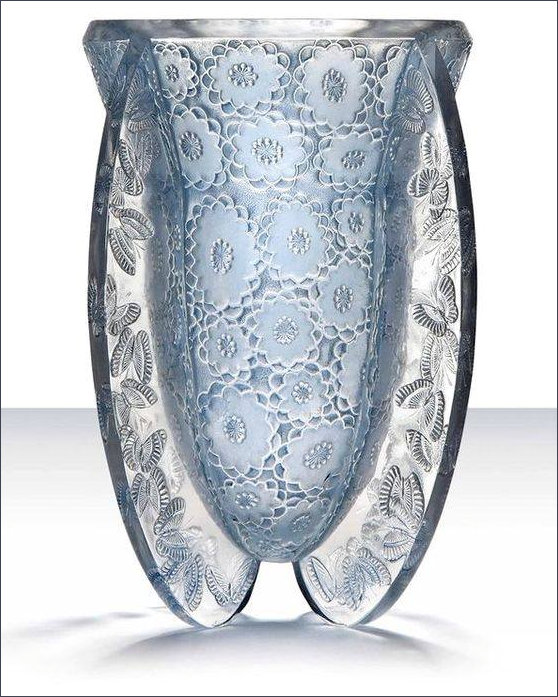
Frosted and Blue Stained Glass 'Papillons' Vase by Rene Lalique, 1936 - image sourced from Pinterest
The incomparable Wilson, Keppel & Betty in 1936
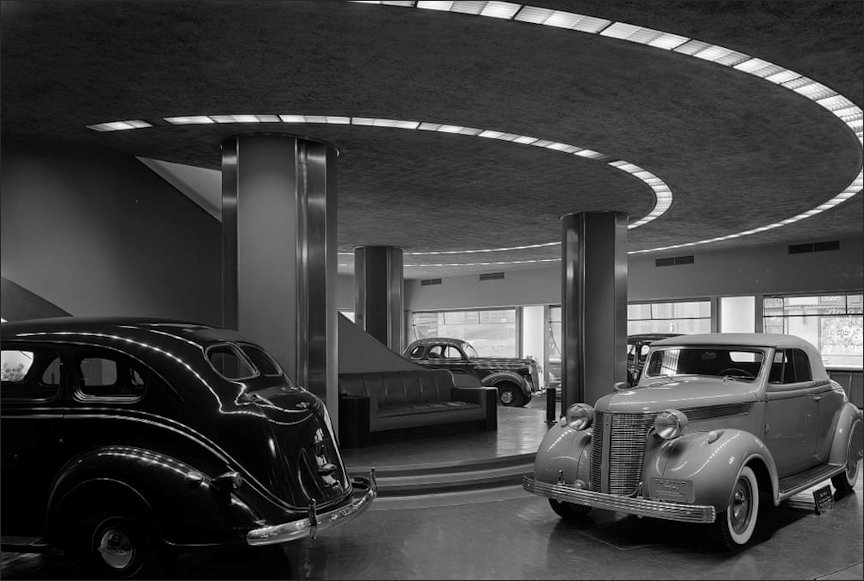
Automobiles at the Chrysler building inside its showroom, 1936 | Photograph: MCNY/Gottscho-Schleisner/Getty Images | Source : theguardian.com
Notable Events 1936 - Headlines
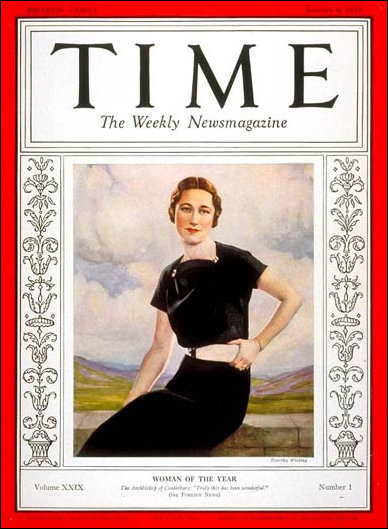
The first Time Magazine issue of 1937 dated 4th January proclaimed Wallis Simpson as the 'Woman of the Year' for 1936 - image courtesy & © of Time Magazine (Cover Credit: Dorothy Wilding)
When American socialite Wallis Warfield Simpson captured the heart of Edward, the Prince of Wales, the romance plunged Britain into a constitutional crisis and made Mrs. Simpson "the most-talked-about, written-about, headlined and interest-compelling person in the world," according to the TIME article naming her Woman of the Year for 1936.
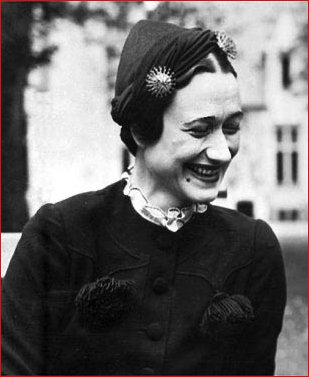
TIME named Wallis Warfield Simpson the first Woman of the Year in 1936
Declaring it impossible to carry out his duties "without the help and support of the woman I love," Edward became the only monarch in the history of Great Britain to voluntarily abdicate the throne. TIME said "the news that the King, as King, wanted to marry Mrs. Simpson was the final culmination of a tide of events sweeping the United Kingdom out of its cozy past and into a more or less hectic and 'American' future." The Duke and Duchess of Windsor, as they were henceforth known, lived for several years in the Bahamas, and spent their remaining decades in Paris. Researched by Joan Levinstein, the Time Inc. Research Center
Wednesday, 1st January, 1936 'The Great Ziegfeld'
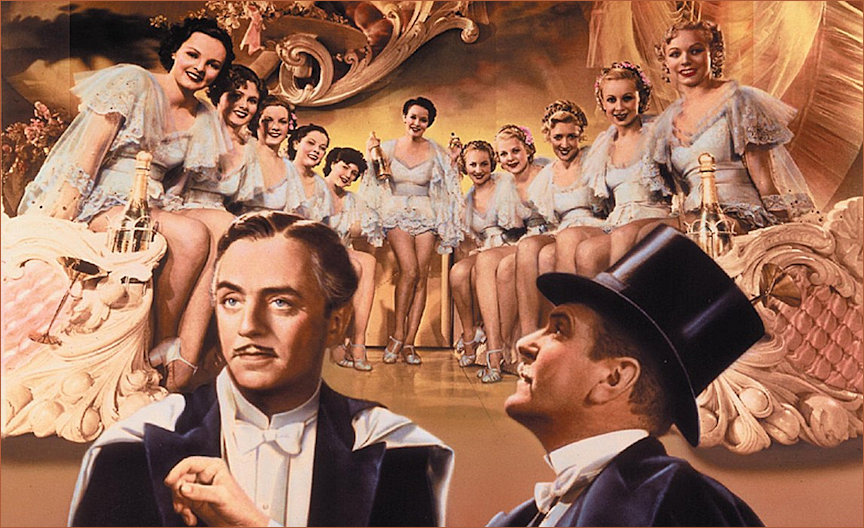
What a fabulous way to start what turns into a very significant and overall traumatic year, especially in Europe - image sourced from Rotten Tomatoes
This lively biopic depicts the rise of Florenz Ziegfeld (William Powell), a theater producer who became renowned during the 1920s for his lavish stage productions. Starting out by promoting individual performers, Ziegfeld established revues featuring dozens of women, shows that developed into his famous Ziegfeld Follies on Broadway. His appreciation of women is also apparent off-stage, leading to a love triangle involving actresses Anna Held (Luise Rainer) and Billie Burke (Myrna Loy). IMDB
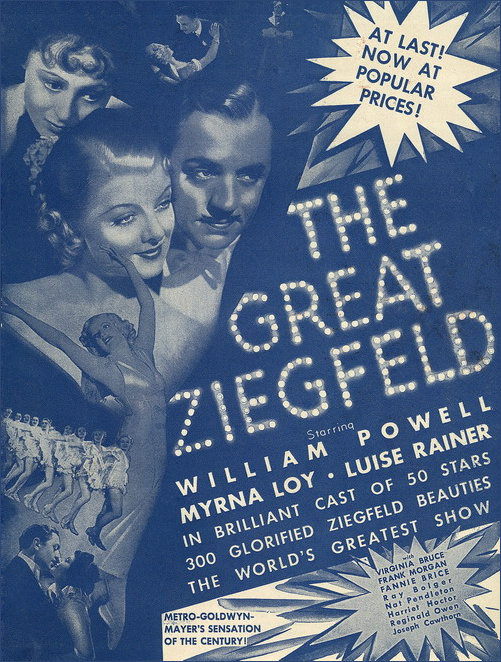
Image sourced from and courtesy of filmweb.pl
The original review (plus credits) by Frank S. Nugent as it appeared in the New York Times on 9th April, 1936
'The Great Ziegfeld,' Metro's Lavish Biography of a Showman, Opens at the Astor.
Dr. Johnson had his Boswell and Florenz Ziegfeld has his Metro-Goldwyn-Mayer; the difference is that between biography and autobiography. So thoroughly Ziegfeldian is "The Great Ziegfeld," which had its première at the Astor Theatre last night, that it would be easy to pretend it had been produced by the Great Glorifier himself rather than by Hunt Stromberg. For the picture has the opulence, the lavishness, the expansiveness and the color of the old Follies; it has the general indifference to humor which was one of Ziegfeld's characteristics; and it has the reverential approach with which, we suspect, Mr. Ziegfeld might have handled his own life story.
That story is a full three hours in the telling and, if you have an interest in the sordid financial details, it is reported to have cost Metro about $500,000 an hour. The budget shows on the screen. It is there in the cast, with William Powell, Myrna Loy, Luise Rainer, Virginia Bruce, Frank Morgan, Fannie Brice, Ray Bolger, Reginald Owen, Ernest Cossart, Harriet Hoctor and the many others who prompted the studio's weaker students of astronomy to advertise their wares with a "more stars than there are in the heavens" slogan. It is there, too, in the glittering sets, the exuberantly extravagant song and dance numbers, the brilliant costumes, the whole sweeping panoply of a Ziegfeld show produced with a princely disregard for the cost accountant. What William Anthony McGuire has attempted in his screen play, and with general success, is to encompass not merely the fantastic personal history of Ziegfeld but the cross-sectional story of the development of the Follies, the Midnight Frolic on the New Amsterdam Roof and the other theatrical enterprises floated under the Glorifier's aegis during a span of about forty years. The two biographies—of the man and of his creations—are, naturally, inseparable; but both have been told with such wealth of detail and circumstance (real and imaginative) that even the three- hour film narrative is fragmentary and, in some places, confused.
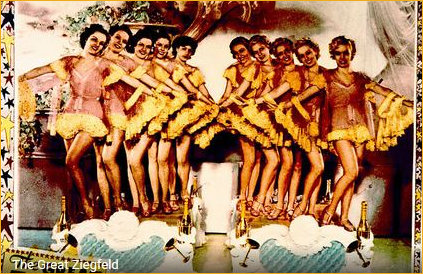
Uninspiring lobby card based on the original MGM line-up as seen below - image courtesy & © of Getty
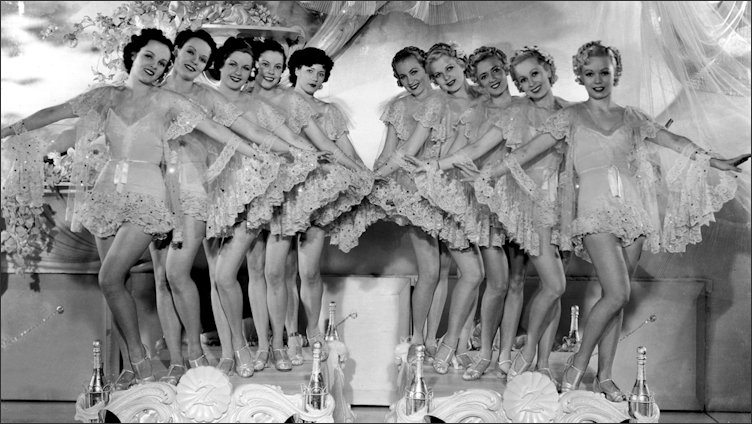
The Great Ziegfeld 'lovelies' line-up - image courtesy & © of MGM via Variety
The picture begins with Ziegfeld (portrayed by Mr. Powell) exhibiting Sandow, the strong man, on the Chicago midway, and it follows him as he progresses from sideshow entrepreneur to head of his vast theatrical enterprises. The history devotes ample footage to his meeting with Anna Held (Luise Rainer), their romance and parting; to his launching of the Follies in 1907; his alternate rise and fall on the tides of fortune; his marriage to Billie Burke (here Miss Loy); his bankruptcy, and his death almost four years ago after staging a successful comeback.
Although it has been screened with a chromatic eye for detail and setting and has been enlivened by the performances of its players, this phase of the film might—it seemed to me—have been abridged by Producer Stromberg and Robert Z. Leonard, its director, to admit more such incidents as the briefly narrated but rousingly comic hiring of Fannie Brice, the dancing of Ray Bolger and the presentation of some other well-known alumnae and alumni of the Ziegfeld shows. It was unfortunate that Eddie Cantor had to be represented by a proxy (Buddy Doyle) and we would have been better pleased without A. A. Trimble's impersonation of Will Rogers. A glimpse of W. C. Fields would have been perfect, but Metro probably couldn't arrange everything.
Adhering to its Ziegfeldian tenets, however, the picture achieves its best moments in the larger sequences devoted to the Girls — ballet, chorus and show. At least one of these spectacular numbers, filmed to the music of Irving Berlin's "A Pretty Girl Is Like a Melody," with overtones of "Rhapsody in Blue," never has been equaled on the musical comedy stage or screen. And some of the others, notably the circus ballet led by Harriet Hoctor, are scarcely less effective. The score generally was plucked from the catalogue of hits in the old Ziegfeld shows and contains, as well, "Yiddle on Your Fiddle" and "My Man," sung by Fannie Brice, and "I Wish You'd Come and Play With Me" and "It's Delightful to Be Married," sung rather pleasantly by Miss Rainer.
Confronted with a film of this size—not merely in volume, but in its Croesus-like treatment—it is almost impossible to remain critically detached. If the picture overcrowds its screen, at least we must admit it is an impressive kaleidoscope; and probably nothing short of that could reflect the gaudy career of America's foremost showman.
Mr. Powell's portrayal is no less attractive than it is flattering to the original. Miss Loy is a stately Billie Burke, and somewhat lacking, we fear, in Miss Burke's effervescence and gayety. Miss Rainer continues to justify the epithet winsome, but is inclined to emotional excesses which are not entirely justified and frequently were extremely trying. Frank Morgan is splendid, as usual, as Billings, a composite of several Broadway theatrical producers, and there is valuable assistance from Virginia Bruce, as an equally composite showgirl; from Reginald Owen as Ziegfeld's business manager and Ernest Cossart as his valet.
Read more : 15th April, 1936 Variety review
Thursday, 9th January, 1936 'Astonished Heart' premiers
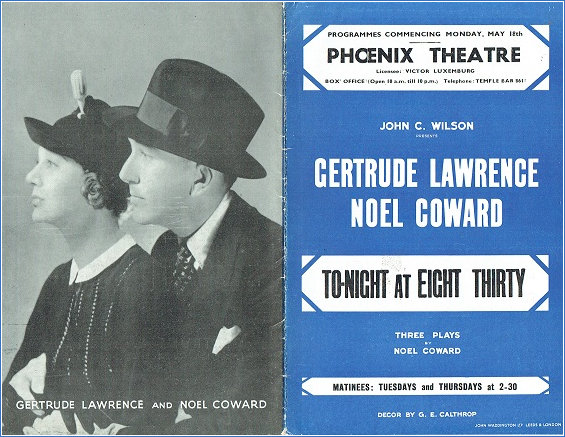
One of a collection of ten (short) plays under the generic heading of 'To-night at eight thirty' written by and starring Noel Coward together with Gertrude Lawrence (for the last time) the 'Astonished Heart' premiered at the Phoenix Theatre on 9th January 1936 - image courtesy & © of overtures.org
From overtures.org - "Noel Coward’s collection of ten short plays played over three nights and matinees as a vehicle for the Master and Gertrude Lawrence – it was the last time they performed together. There was a try-out in Manchester (as To-night at 7.30) with six plays and another play was added during the provincial tour following the Manchester run and prior to its opening at the Phoenix Theatre on 9 January 1936. The Phoenix had opened in 1930 with Coward’s Private Lives in which he had also starred with Miss Lawrence. The other three plays were added during the run at the Phoenix. The plays seen on 6 January 1936, the first night at the Phoenix, were Family Album, The Astonished Heart and Red Peppers. On 13 January Hands across the Sea, Fumed Oak and Shadow Play joined the repertoire. On 29 January We were Dancing replaced Family Album. Star Chamber replaced Hands across the Sea on 21 March for only one performance. Ways and Means was added on 5 May and Still Life on 18 May. All nine continued to be performed in three groups until the show closed after 157 performances on 20 June. The closure was due more to Coward’s hate of long runs than a lack of public interest."
Saturday, 18th January, 1936 - Nobel Prize winner Rudyard Kipling dies
18th July, 2018 Kipling censored by 'Dandruff (Snowflake)' Generation - Shame!
Kipling was an English writer and winner of the Nobel Prize for Literature. He is best known for his poems and stories set in India during the period of British imperial rule.
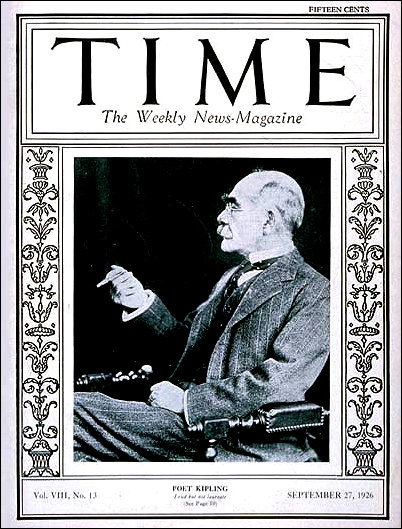
10 years prior to his death, Rudyard Kipling graces the cover of Time Magazine dated 27th September 1926
Rudyard Kipling was born in Bombay, India, on 30 December 1865. His father was an artist and teacher. In 1870, Kipling was taken back to England to stay with a foster family in Southsea and then to go to boarding school in Devon. In 1882, he returned to India and worked as a journalist, writing poetry and fiction in his spare time. Books such as 'Plain Tales from the Hills' (1888) gained success in England, and in 1889 Kipling went to live in London. In 1892, Kipling married Caroline Balestier, the sister of an American friend, and the couple moved to Vermont in the United States, where her family lived. Their two daughters were born there and Kipling wrote 'The Jungle Book' (1894). In 1896, a quarrel with his wife's family prompted Kipling to move back to England and he settled with his own family in Sussex. His son John was born in 1897.
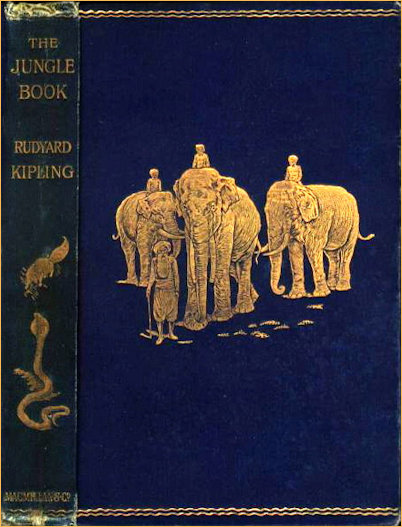
Beautiful 1st edition of 'The Jungle Book'
By now Kipling had become an immensely popular writer and poet for children and adults. His books included 'Stalky and Co.' (1899), 'Kim' (1901) and 'Puck of Pook's Hill' (1906). The 'Just So Stories' (1902) were originally written for his daughter Josephine, who died of pneumonia aged six.
Kipling turned down many honours in his lifetime, including a knighthood and the poet laureateship, but in 1907, he accepted the Nobel Prize for Literature, the first English author to be so honoured. In 1902, Kipling bought a 17th century house called Bateman's in East Sussex where he lived for the rest of his life. He also travelled extensively, including repeated trips to South Africa in the winter months. In 1915, his son, John, went missing in action while serving with the Irish Guards in the Battle of Loos during World War One. Kipling had great difficulty accepting his son's death - having played a major role in getting the chronically short-sighted John accepted for military service - and subsequently wrote an account of his regiment, 'The Irish Guards in the Great War'. He also joined the Imperial War Graves Commission and selected the biblical phrase inscribed on many British war memorials: 'Their Name Liveth For Evermore'.
Kipling died on 18 January 1936 and is buried at Westminster Abbey. Source : BBC History
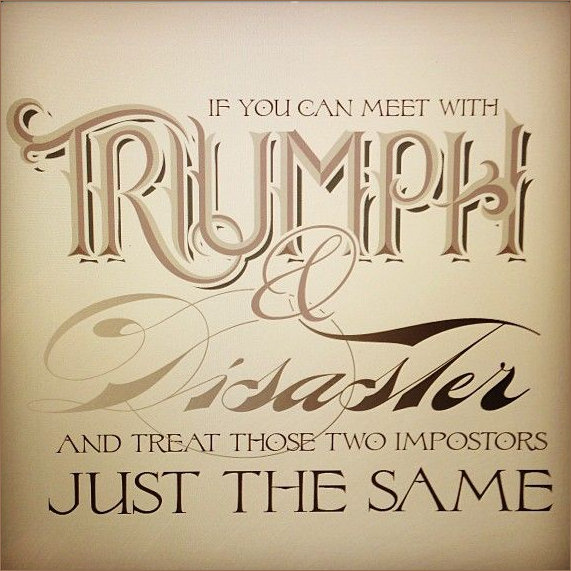
If you can keep your head when all about you
Are losing theirs and blaming it on you;
If you can trust yourself when all men doubt you,
But make allowance for their doubting too;
If you can wait and not be tired by waiting,
Or, being lied about, don’t deal in lies,
Or, being hated, don’t give way to hating,
And yet don’t look too good, nor talk too wise;
If you can dream—and not make dreams your master;
If you can think—and not make thoughts your aim;
If you can meet with triumph and disaster
And treat those two impostors just the same;
If you can bear to hear the truth you’ve spoken
Twisted by knaves to make a trap for fools,
Or watch the things you gave your life to broken,
And stoop and build ‘em up with wornout tools;
If you can make one heap of all your winnings
And risk it on one turn of pitch-and-toss,
And lose, and start again at your beginnings
And never breathe a word about your loss;
If you can force your heart and nerve and sinew
To serve your turn long after they are gone,
And so hold on when there is nothing in you
Except the Will which says to them: “Hold on”;
If you can talk with crowds and keep your virtue,
Or walk with kings—nor lose the common touch;
If neither foes nor loving friends can hurt you;
If all men count with you, but none too much;
If you can fill the unforgiving minute
With sixty seconds’ worth of distance run—
Yours is the Earth and everything that’s in it,
And—which is more—you’ll be a Man, my son!
With thanks to the Poets.org for the poem narrative.

Forever associated with Kipling 'If' at Wimbledon - image sourced from L'Equipe
Monday, 20th January, 1936 - the Abdication Timeline
20th January, 1936 - King George V dies. Edward becomes King
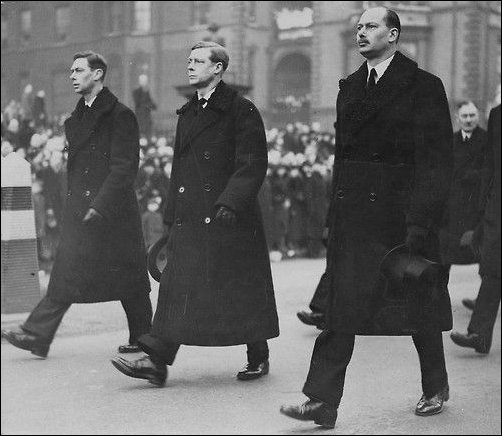
The late monarch's sons at his funeral in 1936 - l to r the Duke of York (the future) King George VI, HM Edward VIII and the Duke of Gloucester (out of vision is the Duke of Kent) - image via the Daily Express
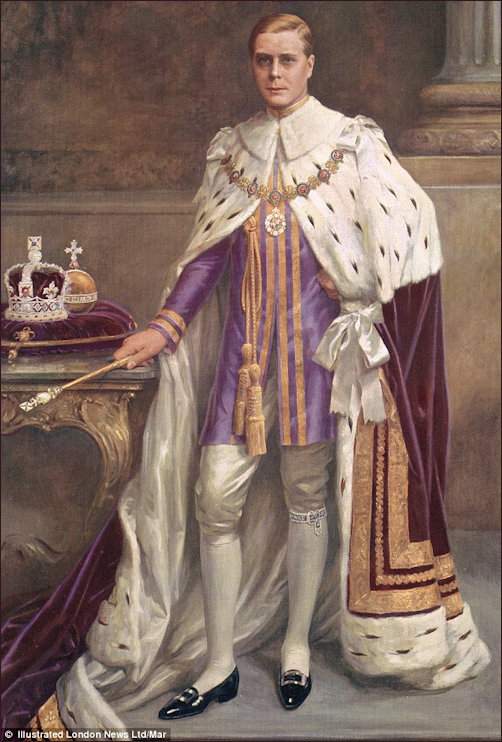
The unused 'Coronation' portrait image courtesy & © of the Illustrated London News via the Daily Mail - Poignant: King Edward VIII, later the Duke of Windsor, fictitiously pictured in royal robes for a coronation portrait which was never published.
Tuesday, 21st January, 1936 - The 'Green Hornet' radio show premiers on the WXYZ Radio in Detroit
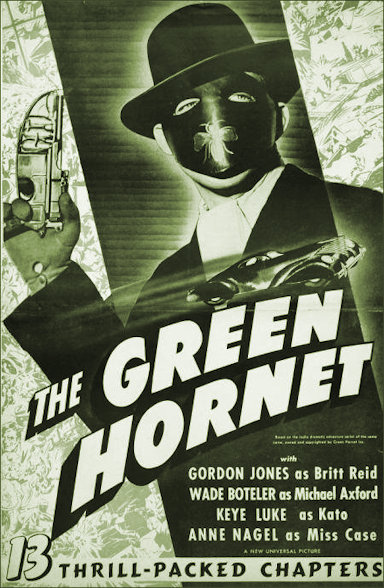
The Green Hornet radio show premiered on the same radio station as the Lone Ranger, three years almost to the day later. The Lone Ranger’s last name was Reid; the Green Hornet was…Reid. Both had a trusty horse. Both fought crime and injustice. Both had sidekicks — Tonto for the Ranger and Kato for the Hornet. It would really be a remarkable coincidence…if it wasn’t all planned.
On January 31, in 1936, The Green Hornet radio show premiered, beginning in much the same fashion as The Lone Ranger — classical music, narrator introduction and all. The Hornet’s secret civilian identity was Britt Reid, “a daring young publisher”, and a (vaguely distant) blood relative to the Ranger. The Hornet’s sidekick also ran into a bit of controversy. While he was better-spoken than Tonto, he looked vaguely Japanese — a fact that did not play well when the war against Japan began in 1941. Kanto’s origins were quickly hushed up following war’s outbreak, but they were not forgotten – in 1942 a daring air raid over Japan featured a bomber called “The Green Hornet.” Source : FamousDaily.com
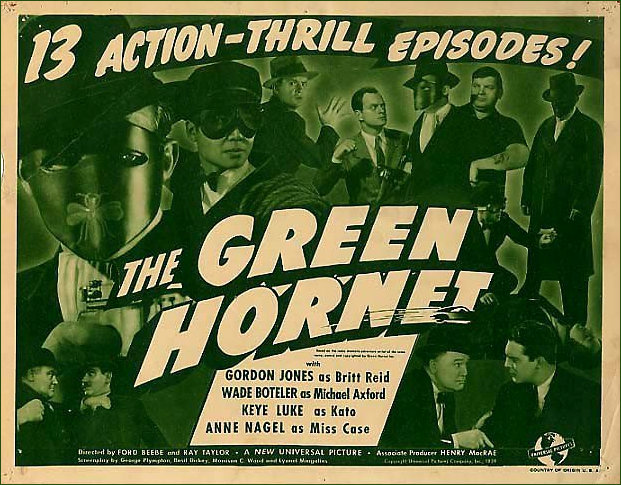
January 31, 1936 marked the beginning of what would later be known as one of the most iconic old radio shows during golden age of radio. The Green Hornet was originally aired on station WXYZ in Detroit, the same network that popularized other programs such as The Lone Ranger and Challenge of the Yukon. This crime-fighting series followed the adventures of Britt Reid, a wealthy young journalist and his faithful side-kick Kato. Reid presented a ne’er do well attitude to the world which was the exact opposite of his real feelings. He violently abhorred the corruption that permeated society and sought to change it by targeting the very heart of the underworld. This dynamic duo was even compared to Batman and Robin as they had secret identities which they used as a cover for their nightly activities as masked vigilantes. The Green Hornet captured multitudes of listeners, and was in fact heralded as the most popular young adult-oriented old time radio shows of the time. Let the hypnotic melody of Nikolai Rimsky-Korsakov’s “Flight of the Bumblebee” draw you into the fast-paced world of The Green Hornet. Narrative and images Source : oldtimeradiodownloads.com
Tuesday, 4th February, 1936 - First Synthesis of naturally found Radioactive substance
From the 'Science Newsletter' dated 8th February, 1936 Man has at last been able to make a radioactive substance that occurs in nature. By powerful bombardments of a common substance there has been created synthetically in the radiation laboratory of the University of California a form of radium. This first synthetic production of any naturally occurring radioactive substance is the accomplishment of Dr. J.J. Livingood, research associate.
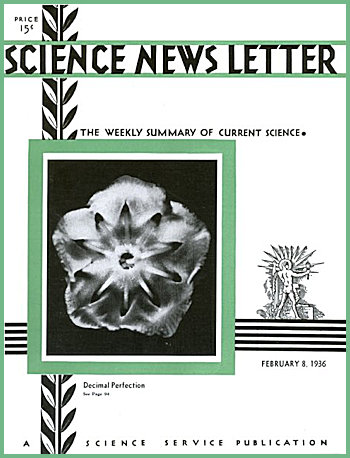
The substance that he has created for the first time by artificial laboratory methods is radium E, one of the intermediary products in the slow decay of ordinary radium to lead. The amount of radium E so far obtained is almost infinitesimal, but careful checks leave no doubt as to its identity. Synthetic radium E was obtained by Dr. Livingood through the bombardment of the common, inert substance bismuth with deuterons at an energy of approximately 5.5 million electron volts.
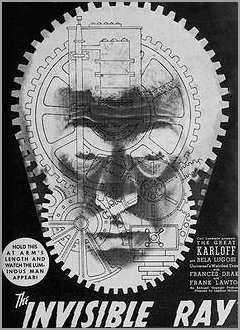
Image source : Pinterest
The Pandora Society comes up with an interesting fact mirroring fiction analogy : "Only two weeks before the discovery of making synthetic radium, Universal Picture released the film The Invisible Ray on January 20th, 1936.- In this science fiction horror film, a visionary doctor, Dr. Janos Rukh (Boris Karloff) invents a telescope that can look far out into space — into the Andromeda Galaxy — and pick up rays of light that will show the Earth’s past. Looking at the past on a planetarium-like dome in his lab, a group of assembled scientists as well as Dr. Rukh see a large meteor hit the earth thousands of years ago. Amazed by the demonstration, the group invites Rukh to go on an expedition to find the meteor that appeared to land in Africa. While in Africa, Rukh finds the meteor but is exposed to strong radiation (“Radium X“) from the rock, which makes his touch death on the spot. Dr. Benet (Bela Lugosi) develops a serum that holds this effect at bay and takes a piece of the stone back to Europe and uses it to heal people, including curing the blind. Rukh, suffering from the radiation, glows at night when not treated and is slowly losing his mind."
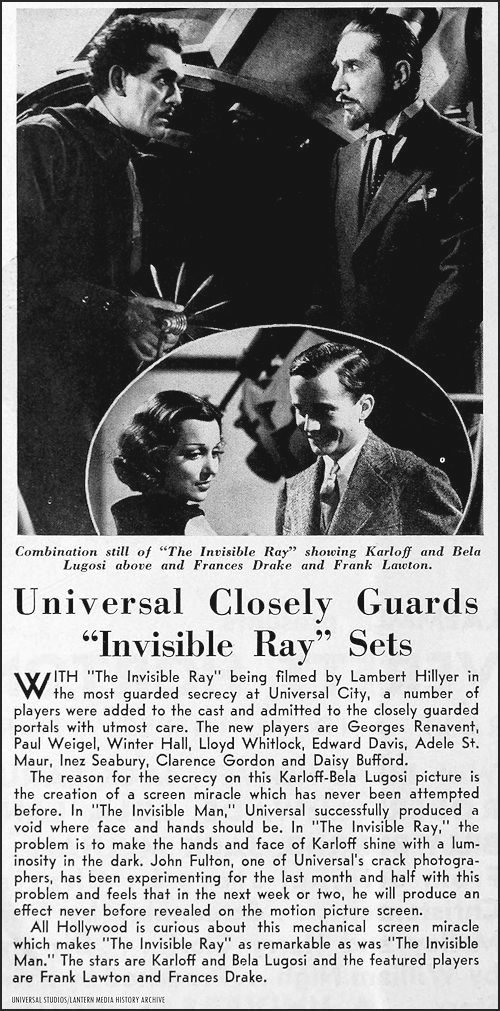
Image source : Universal Studios/Lantern Media History Archive via Silver Screen Reflections | IMDB
The Pandora Society had preceded this astonishing fact with a compact explanation of radium and its natural origins : "Radium, in the form of radium chloride, was discovered by Marie Curie and Pierre Curie in 1898. They extracted the radium compound from uraninite and published the discovery at the French Academy of Sciences five days later. Radium was isolated in its metallic state by Marie Curie and André-Louis Debierne through the electrolysis of radium chloride in 1910. In nature, radium is found in uranium and (to a lesser extent) thorium ores in trace amounts as small as a seventh of a gram per ton of uraninite. Radium is not necessary for living organisms, and adverse health effects are likely when it is incorporated into biochemical processes because of its radioactivity and chemical reactivity. Currently, other than its use in nuclear medicine, radium has no commercial applications; formerly, it was used as a radioactive source for radioluminescent devices and also in radioactive quackery for its supposed curative powers. Today, these former applications are no longer in vogue because radium’s toxicity has since become known, and less dangerous isotopes are used instead in radioluminescent devices."
Monday, 17th February, 1936 - World's first superhero, The Phantom, makes first appearance in comics.
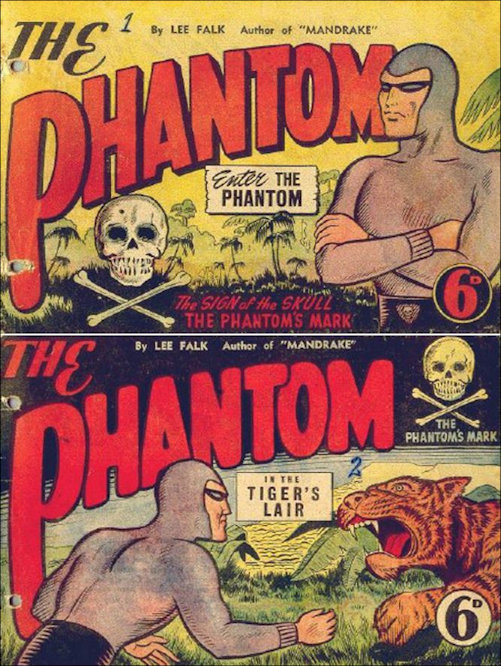
The first two covers of 'The Phantom' - image courtesy of Pininterest
From ComicVine (edited) - "In 1936, Lee Falk created a mysterious costumed crime fighter on the request King Features Newspaper Syndicate to create a new feature. It began as a daily newspaper comic strip on February 17th, 1936. He planned the story for initial few months and then drew them himself for the first two weeks as sample strips. Lee Falk was inspired by different myths and legends - El Cid and King Arthur and some fictional characters namely Zorro, Tarzan and Mowgli. Initially, the Phantom's alter ego was a rich playboy by name Jimmy Wells. But in later stories that introduced the Singh Brotherhood, the Phantom was moved to the jungle making him more of a jungle legend. As there were many other fictional characters carrying the name "Phantom" e.g. The Phantom Detective and The Phantom of Opera Falk thought about calling this masked man "Gray Ghost" but somehow preferred "The Phantom"."
Thursday, 20th February, 1936 - 'Things to Come' premiers
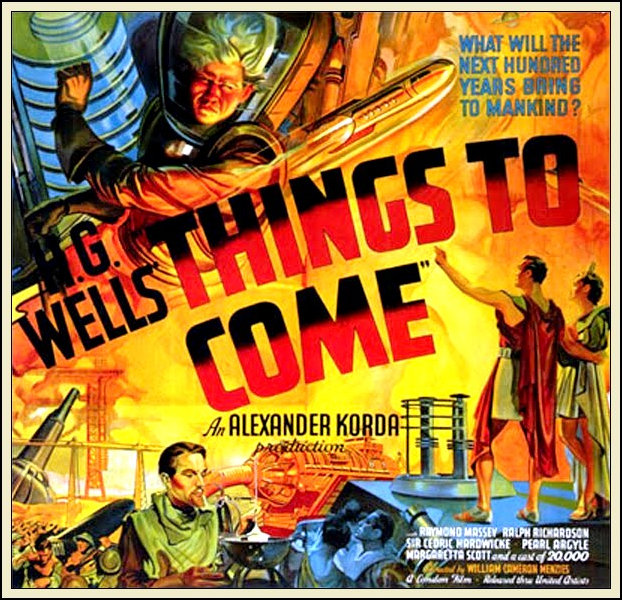
Poster of the 'Things to Come' IMDB ref sourced from Project Gutenberg Australia
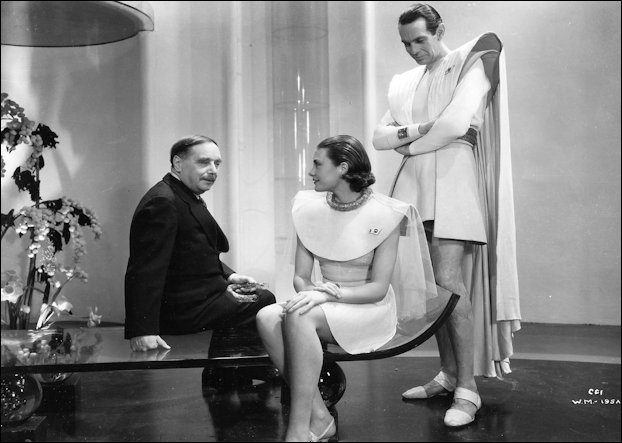
H.G. Wells on set with cast members Raymond Massey and Margaretta Scott - image sourced from The Red List
Cast: Raymond Massey (John Cabal/Oswald Cabal); Ralph Richardson (The Boss); Edward Chapman (Pippa Passworthy/Raymond Passworthy); Margaretta Scott (Roxana/Rowena); Ann Todd (Mary Gordon) Synopsis : The city of Everytown endures thirty years of gruelling war, famine and disease. But in the distant future Everytown is rebuilt, heralding a new era of scientific progress. Source : BFI More here
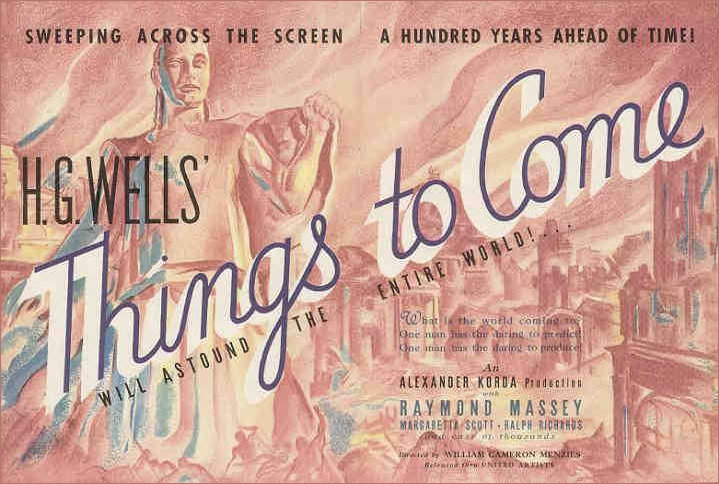
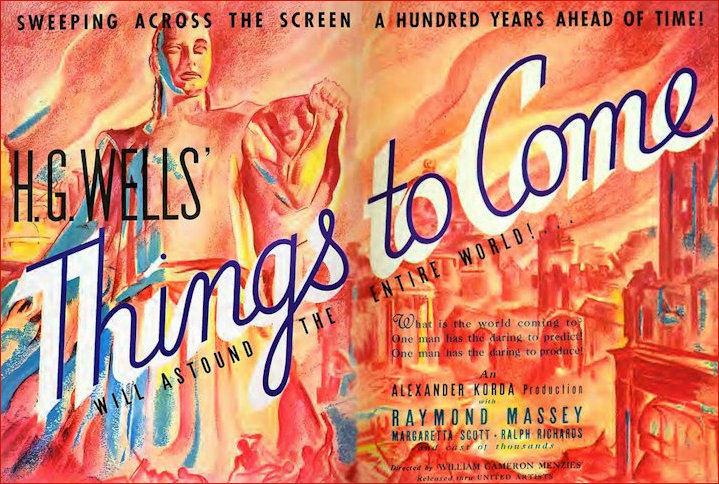
Two variations on an unusual poster - personally I prefer the muted colours of the first poster - with thanks to IMDB for the image
Wednesday, 4th March, 1936 - The 'Hindenburg's' Maiden Flight
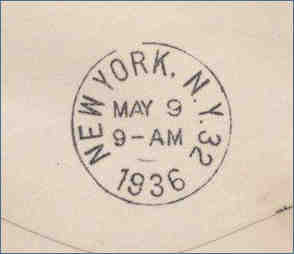
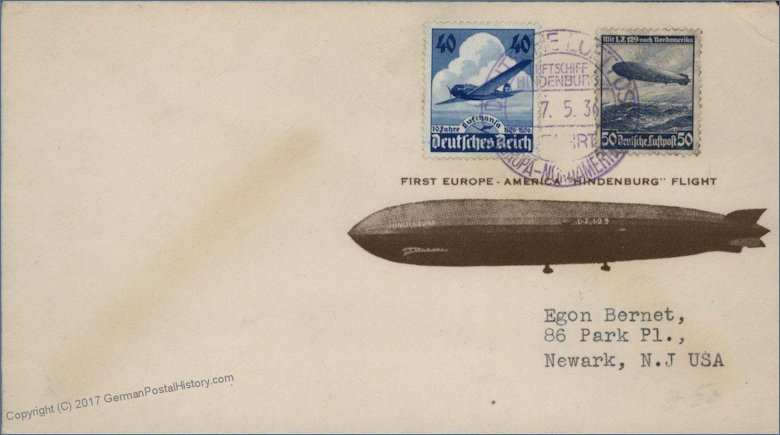
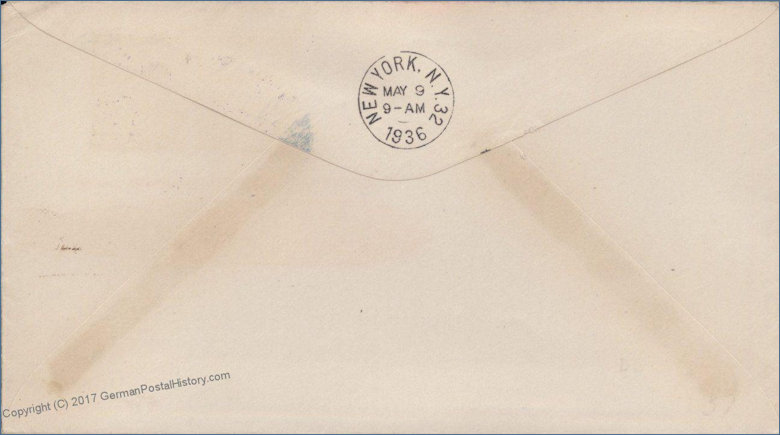
First Day cover* of the inaugural flight of the Hindenburg - images sourced from and © of GermanPostalHistory.com
*"Original German cover flown on the Hindenburg Zeppelin airship's 1936 1st North American flight. In slightly worn, Bedarfserhaltung / commercially used condition, as per scans. All of the stamps of the LZ129 issue have gum that contains sulfuric acid, which usually tones the stamp and/or cover. With Bordpost / on-board cancel. '01 CV EUR50 for the flight; nice illustrated cover." Source : GermanPostalHistory.com
First flight of airship Hindenburg in 1936
No-one on board the Hindenburg for its first flight in 1936 could have imagined the tragedy** that would befall the airship just a year after that maiden voyage. At around 3pm on March 4th, 55 crewmen and 30 passengers were aboard the Hindenburg as it was moored in Friedrichshafen, Bavaria, on the shores of Lake Constance. "Any number of engineers and dock workers were aboard," as well as designer and technical director Ludwig Dürr, Barbara Waibel of the Zeppelin Airship Works Archive said. Dürr "wanted to see how his latest ship handled", she explained. The flight lasted a total of three hours and six minutes, covering 180 kilometres and allowing the crew to test the ship's rudders, turning circle, speed and sonar system at a height of around 700 metres. "The exact route isn't recorded in the flight report, but they mostly criss-crossed above the Bodensee [the German name for Lake Constance]," Waibel said.
Only a few precious images of that first tentative test flight remain. "You can see in the pictures that a real cloud of smoke is released when the ship sets off," Waibel noted. "That was dust from the hangar, because the ship had been under construction for such a long time."
Years in the making
Planning for the Hindenburg, alias Zeppelin LZ129, had been going on since 1930, and it was to be the crowning glory of German airship technology. To this day it remains the record-holder as the largest air-going vehicle that has ever been built by mankind, at 245 metres long with a diameter of 41.2 metres, Waibel said. As well as being an engineering marvel, it was a luxury liner, with a lounge featuring well-stuffed armchairs and a huge black piano, a smoking room with drawings of the ship, and even a writing room.
What's in a name
But between 1930 and the ship's first flight in 1936, a darkness had fallen over Germany that was reflected in the choice of its name. Field Marshal Paul von Hindenburg had been one of the top German commanders in the First World War. Despite the defeat of 1918, the aging former general became the object of hero-worship in the inter-war Weimar Republic, eventually becoming Reich President in 1925. It was Hindenburg who, at the urging of conservative forces who believed they could control the upstart Nazi leader, named Hitler to the Chancellorship in 1933. The field marshal was a symbol of past German glory and of the courage of the army, which many believed had been defeated by a "stab in the back" from cowardly politicians and Jews on the home front rather than in the field. It was the perfect propagandistic name for a vessel that was to carry the flag of Hitler's resurgent Germany through the skies across the world.
Tragedy strikes
But fate had other plans for LZ129, and it was just a year later that the final catastrophe struck at Lakehurst, New Jersey. In just a year, the Hindenburg had travelled 337,129 kilometres between Germany and the Americas. It had carried 7,305 passengers, 9,758 kilos of freight and 8,869 kilos of post on eight round trips to South America and eleven to North America. But as it arrived in Lakehurst on the evening of May 6th 1937, fire broke out in the tail of the ship, and within seconds the entire vessel burned up as its hydrogen gasbags were consumed. The toll stood at 36 people dead, including 13 passengers, 22 crew and a ground crew worker. Source : thelocal.de | ** Read more about the disaster on livescience.com
Thursday, 5th March, 1936 - Spitfire Maiden Flight
The Spitfire - the iconic fighter plane of the Battle of Britain - takes to the skies
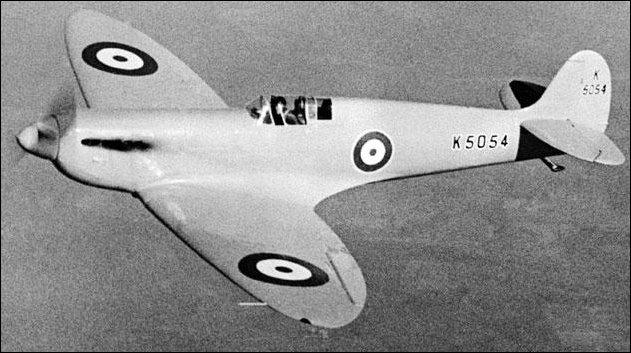
A Spitfire Mk1 fighter made by Messrs. Vickers, on show to the public for the first time over Eastleigh Aerodrome, Southampton - image courtesy of bt.com
The high-speed fighter plane that was to capture the public's imagination - and put fear into the hearts of German pilots - made its maiden flight at a Hampshire airfield.
'The Supermarine Spitfire - the British fighter aircraft that became the iconic plane of the Battle of Britain - made its first flight on this day in 1936. On the night of March 5, Captain Joseph 'Mutt' Summers - chief test pilot at Supermarine's parent company Vickers-Armstrongs - took off in the Type 300 K5054 prototype from Eastleigh airfield in Hampshire. At the end of the eight-minute flight, Summers climbed out of the cockpit and said to the small group of observers "I don't want anything touched", indicating that nothing required correcting before his next test flight.'
More about 1930s air travel here
Saturday, 11th April, 1936 - Butlin's opens in Skegness
Butlins: Fascinating story of the iconic British holiday company from 1936 to today (2011) ...
Buoyant Butlins celebrated its 75th birthday in 2011. - Source : The Daily Mirror
To say the nation’s favourite holiday park has changed since it opened in 1936 is an understatement. Back then it was canteen dining and modest chalets... today it’s all about high-class hotels, soothing spas, fine wine and a celebrity chef restaurant. It was in 1928 that William Heygate Edmund Colborne “Billy” Butlin became the first person to introduce dodgems to the UK at his fairground in Skegness, Lincolnshire. As his funfair empire expanded he decided to attract more business by providing accommodation on the site. And Butlins was born. Now, 75 years on, it has three modern coastal resorts and is owned by multi-million pound group Bourne Leisure. This is the story of Butlins...
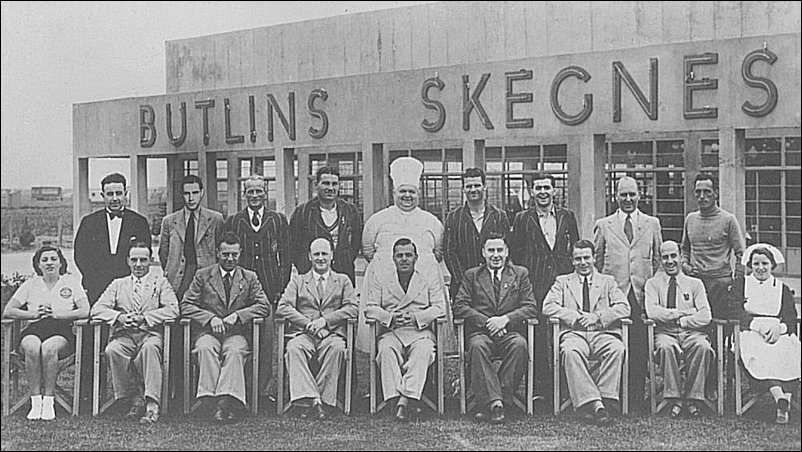
The Skegness Team in 1937 - image courtesy of Butlin's Blog
1936: Butlins’ first holiday camp opens at Skegness on April 11 – it costs £100,000 to build. With a capacity of 1,000 guests, it is officially opened by aviator Amy Johnson, the first woman to fly solo from England to Australia. Freda Monk, from Nottingham, is the first Butlins ‘camper’ and Norman Bradford is the first Redcoat. A week’s holiday, between July and September, cost £2.12s.6d per adult and £1.6s.3d per child. That equates to around £133 and £66.50 respectively today. To read more and the chronology up to 2011 visit here
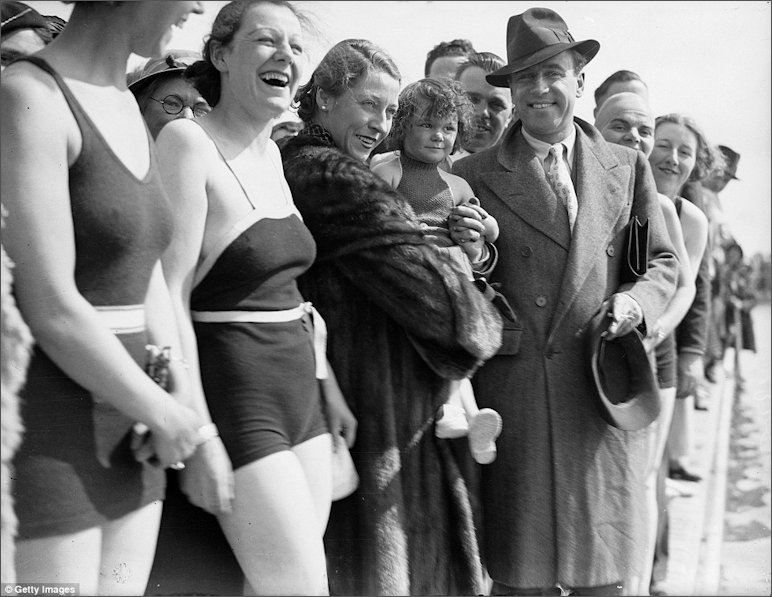
Fun for all: Aviators Amy Johnson and her husband Jim Mollison open the bathing pool at Butlin's Holiday Camp in Skegness in 1936 - image courtesy & © of Getty via the Daily Mail
Interesting - note : On a bitterly cold Easter Saturday 75 years ago, in a former turnip field near Skegness, snow threatened to make a mockery of Billy Butlin’s dream. April 11, 1936, felt like midwinter when Amy Johnson, Hull’s legendary aviator, officially unveiled his concept of package holidays for the masses. Source : Yorkshire Post
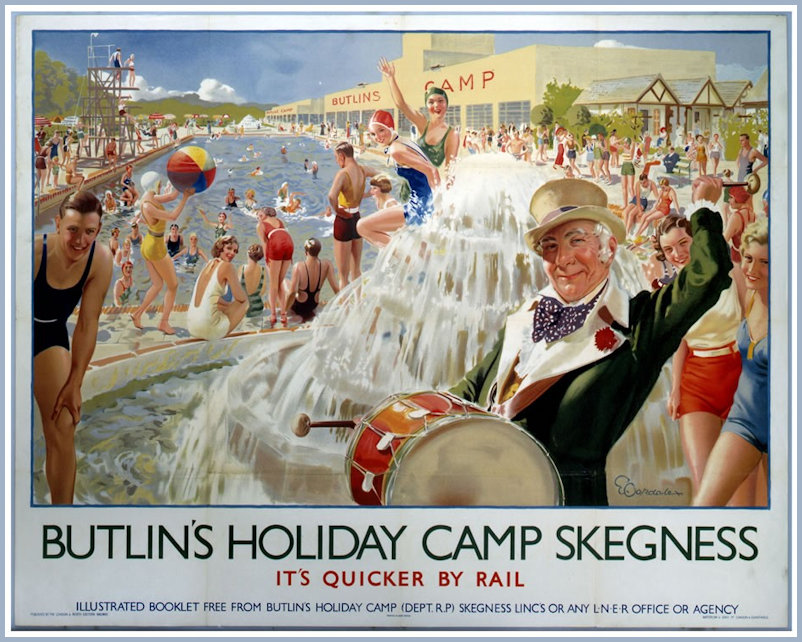
Sunday, 12th April, 1936 - 'Mr Deeds Goes to Town' premiers
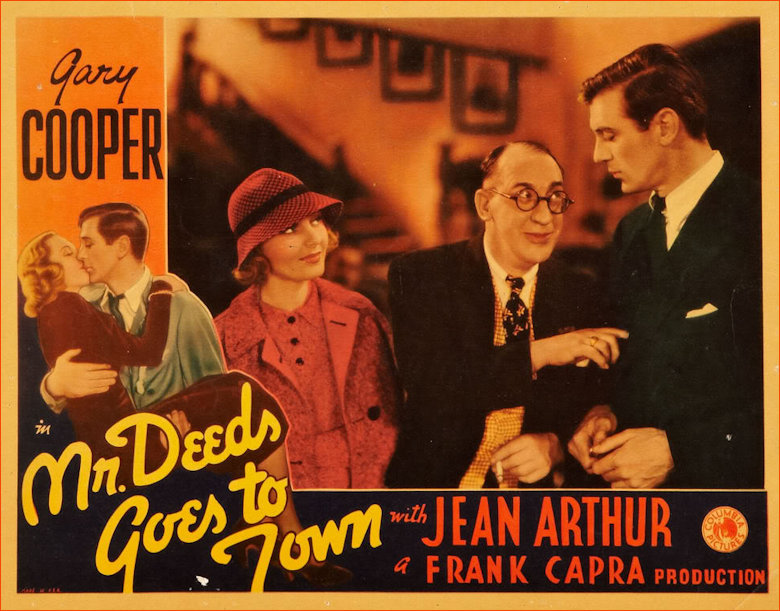
Brief synopsis - Longfellow Deeds (Gary Cooper), a resident of small-town Vermont, leads a simple life until he inherits a vast fortune from a late uncle. Soon, unscrupulous lawyer John Cedar (Douglas Dumbrille) brings Deeds to New York City, where the unassuming heir is the object of much media attention. When wily reporter Babe Bennett (Jean Arthur) gains the trust and affection of Deeds, she uses her position to publish condescending articles about him -- but are her feelings for him really that shallow? Ref : IMDB | This film won the Academy Award for Best Director (Frank Capra) in 1937 and awarded the Medal of Special Recommendation, also to Capra in 1936.
Saturday, 2nd May, 1936 - Prokofiev's 'Peter & the Wolf' premiere's in Moscow
Image courtesy & © of the BBC
From 1923 to 1936, Prokofiev lived in Paris while continuing to travel to Russia. His music was published in the Soviet Union and articles in Soviet publications praised his music and success. He moved back to Russia in 1936 and was commissioned by Natalya Sats to write Peter and the Wolf. Prokofiev composed the work in four days and Sats contributed ideas for the libretto. The premiere was May 2, 1936 by the Moscow Philharmonic but the work was not well received. It was performed three days later, May 5, 1936, at the children’s theater with Sats providing the narration. The result was the launching of a successful work in the Soviet Union and throughout the world.
Two different images of Prokofiev's 'Peter and the Wolf' l to r : a Russian image and an LP cover for the Western World in a very Slavonic design which appeals to me a lot more than the Russian version. Provenance - internet images
To this day, elementary school children hear Peter and the Wolf during school assemblies or at concerts for young people. They associate birds with the flute, cats with clarinets, ducks with oboes, and wolves with French horns. The people in the story are also represented with specific instruments: hunters with woodwinds, trumpets, timpani, and bass drum, the grandfather with the bassoon, and the hero Peter with strings. Source : cmuse.org
Peter and the Wolf is 50 years old (1985) - read the NY Times Tribute here
May 1936 - Amy Johnson 'Britains Sky Queen' breaks final record.
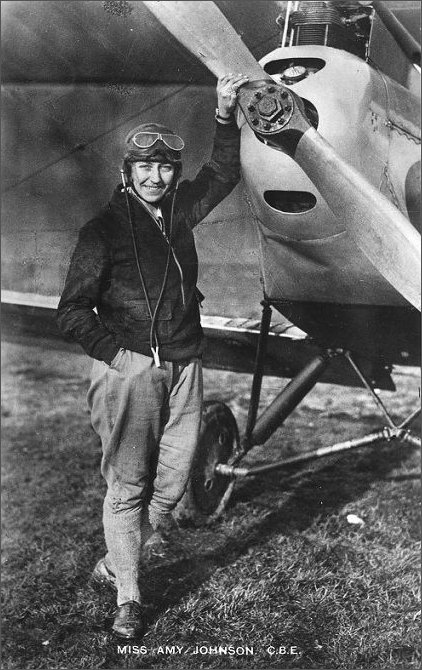
Amy Johnson awarded the C.B.E. in 1930
Amy Johnson's final record breaking flight was to South Africa in May 1936 in which she set a record from England to Cape Town, solo, in a Percival Gull, arriving in Croydon in a record 4 days 16 hours to retrieve her 1932 record. Read more here
Wednesday, 20th May, 1936 - 'Odeon' Well Hall, Eltham opens
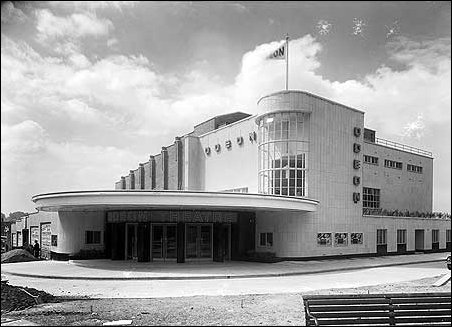
The Odeon cinema on Well Hall Road. The cinema opened in 1936 to the designs of Andrew Mather, a specialist in cinema architecture.
Images courtesy & © of Viewfinder.historicengland from the John Maltby* collection
*Odeon cinema collection. John Maltby (1910-80) was a professional photographer. In 1935 he was commissioned to photograph every cinema in the Odeon chain.
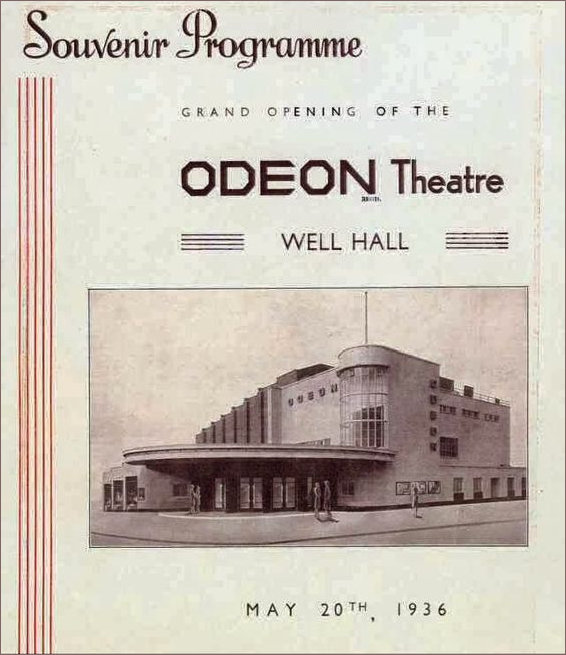
Those were the days when you got a souvenir programme when you attended a grand opening of a cinema. See more about 1930s cinemas here.
Wednesday, 27th May, 1936 - RMS Queen Mary
As the RMS Queen Mary celebrates her 80th anniversary it seems right to give her pole position on this page - for a spectacularly in-depth report visit the Daily Mail article here
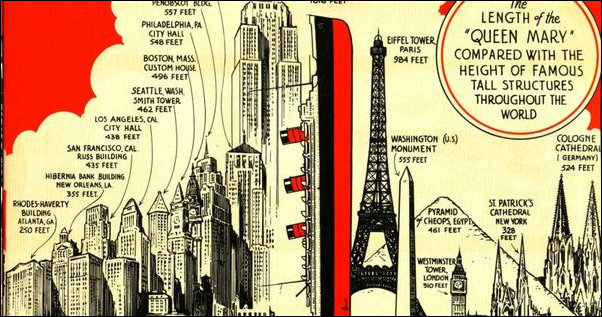
Promotional material courtesy of classicliners.net
The RMS Queen Mary, a luxurious ocean liner that carried the world’s rich and famous before the dawn of the jet age, is celebrating the 80th anniversary of its maiden voyage. One of the greatest passenger ships ever built, the 1,020ft Queen Mary left Southampton on 27 May 1936 en route to New York, the first of many transatlantic crossings that attracted the likes of Winston Churchill, John F Kennedy, TS Eliot, Elizabeth Taylor, Bob Hope and many other glamorous guests.
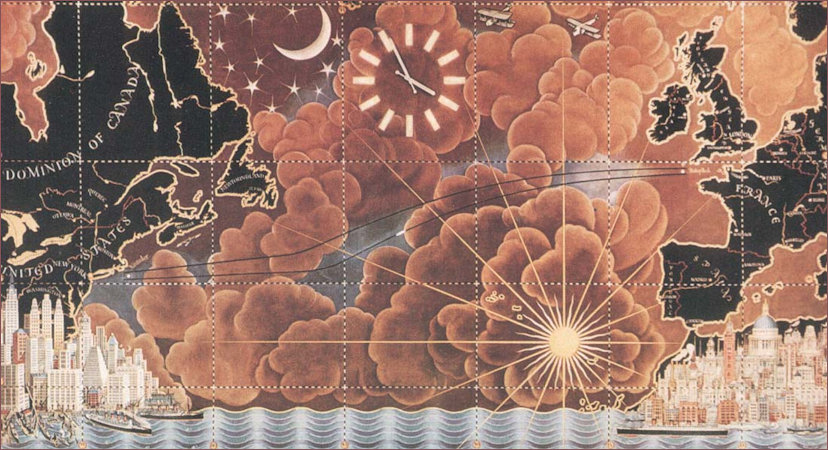
A fascinating decorative map, 24ft. by 15ft. occupies a similar position at the forward boundary of the apartment. The work of Mr. MacDonald Gill, F.R.I.B.A., this map represents the North Atlantic Ocean, and the artist has treated the subject in a bold formalistic style, with the composite groups of typical buildings of England and America at the sides, a large illuminated chart being the main feature. Further interest is added by the introduction of a clock and the vessel’s summer and winter courses; while an illuminated model in crystal indicates the position of the ship on the voyage between Bishop’s Rock and the Nantucket lightships.
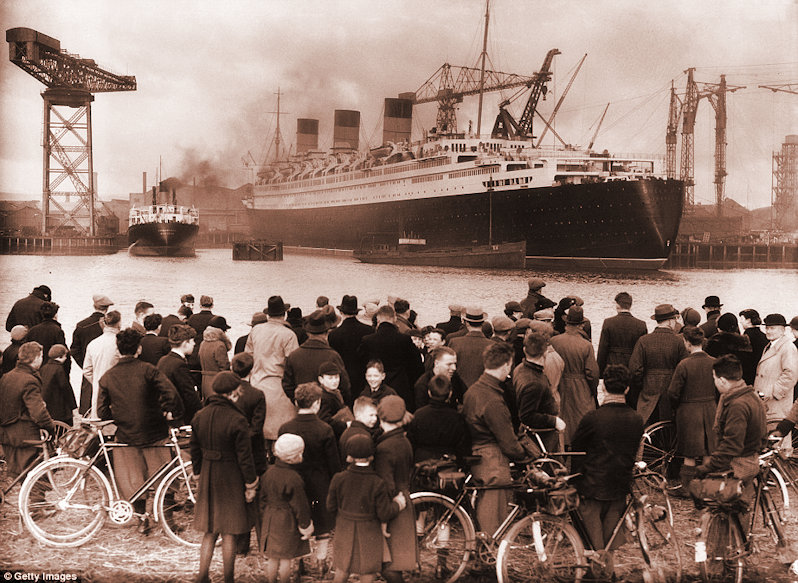
A crowd admires the Cunard-White Star Line passenger ship the RMS Queen Mary at Clydebank, near Glasgow, in Scotland in 1936
The Art Deco liner was the largest and fastest passenger ship in the world when it launched, and had three classes of cabins, an opulent first class dining room, ballroom, cocktail bars, a stage for music, two indoor swimming pools, a squash court, libraries, a telephone connection and a small hospital. It was the flagship of Liverpool-based Cunard-White Star Line when it left John Brown & Company’s shipyard in Clydebank, Scotland after six years of construction.
The historic Queen Mary transported Allied soldiers during World War Two and returned to passenger service until it was retired in 1967 as profits dropped and the jet age took off. Today, the historic ship is permanently moored in Long Beach, California, where it has been preserved as a tourist attraction with a museum, hotel, restaurants and an exhibition containing some of Princess Diana's belongings.
The Queen Mary offered a 'souvenir' launch book which detailed artists work and provided comprehensive pictures of the ship and its accommodation - for an interesting tour visit here. See more about the Queen Mary and Sea Travel here.
Saturday, 30th May, 1936 - Portobello Open Air Pool Opens in Edinburgh
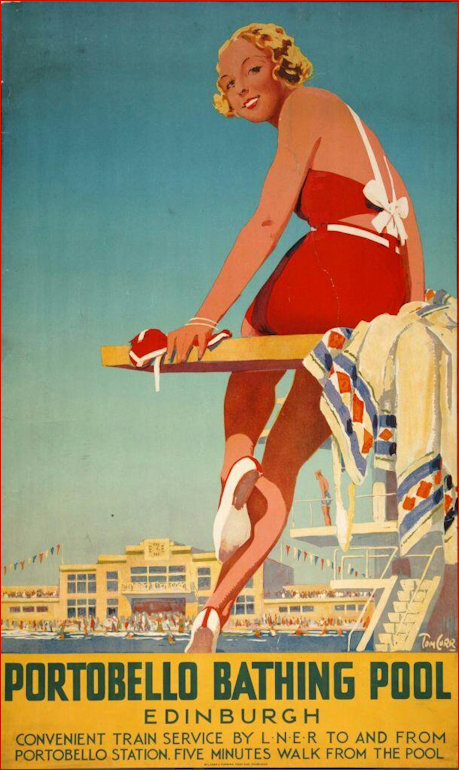
Artwork by Tom Curr
Portobello Open Air Pool was opened in Portobello, Edinburgh on Saturday, 30th May 1936 at a cost of £90,000
Edinburgh Portobello Bathing Pool opened - With a newly-formed regatta club holding a series of competitions and Firth of Forth paddle steamers now able to stop off at Portobello, the pier made the town busier than ever. However, come the winter, when the holidaymakers had gone, the iron structure was left to the elements. As repair bills escalated, the pier began to rot. By 1917, its demolition began. Throughout the following three decades various proposals for a replacement were put forward, but none ever made it off the drawing board. However, everyone agreed that the resort needed a major new attraction and in 1936 it got one – a brand new open-air swimming pool.
Its Art Deco design stood in sharp contrast to the nearby red-brick power station opened by King George V a decade earlier. Not that anyone seemed to mind, perhaps because, as well as supplying the electricity requirements of Edinburgh's rapidly expanding population, it would also heat the swimming pool. - Source and to read more : The Independent
Thursday, 11th June, 1936 - the International Surrealist Exhibition opens in London
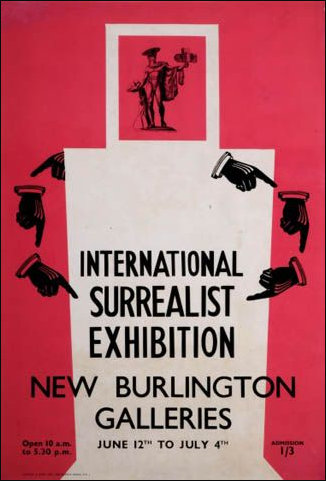
Catalogue cover
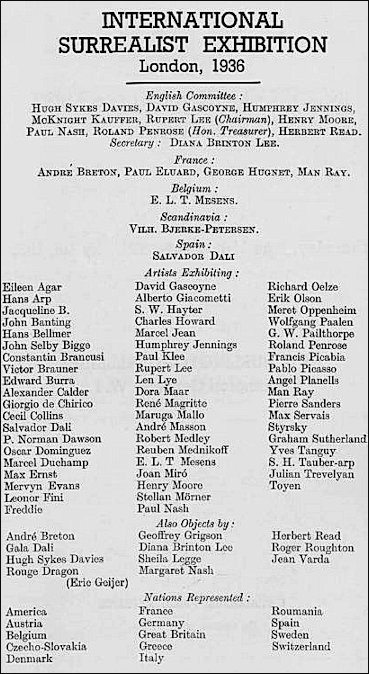
Participants
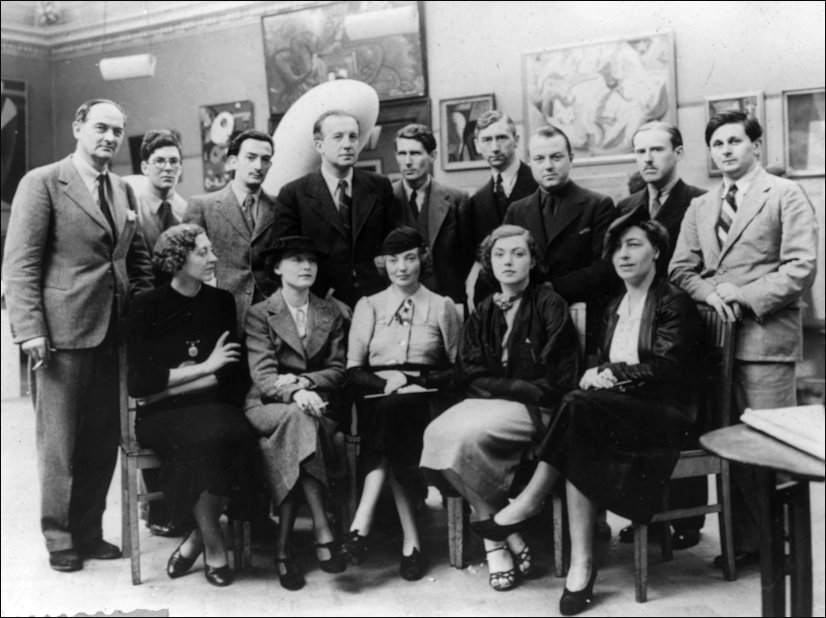
‘International Surrealist Exhibition’, New Burlington Galleries, London, 1936. Standing left to right: Rupert Lee, Ruthven Todd, Salvador Dali, Paul Eluard, Roland Penrose, Herbert Read, E.L.T. Mesens, George Reavey and Hugh Sykes Williams. Seated left to right: Diana Brinton Lee, Nusch Eluard, Eileen Agar, Sheila Legge and an unidentified friend of Dali - image and identification courtesy of shafe.co.uk
A bit of a wild event then - from the FT via the BBC - "Dylan Thomas offered cups of boiled string to visitors (“Weak or strong?”). William Walton hung a kipper on a Miró. Salvador Dalí, screwed into his diver’s helmet, began to suffocate, his flailing arms taken for part of his act until someone realised he was expiring and rushed out to find a spanner in the purlieus of the New Burlington Galleries. From recorded archives venerable voices grown old both gracefully and disgracefully recall the International Surrealist Exhibition of 1936 when the police sealed the street against opening-event crowds and Port of London customs officers nearly burnt a crate of paintings in disapproval. Who said the 1960s invented happenings?" Read more here | Tate
Saturday, 13th June, 1936 - Shoreham Airport re-opens in Streamline Moderne makeover
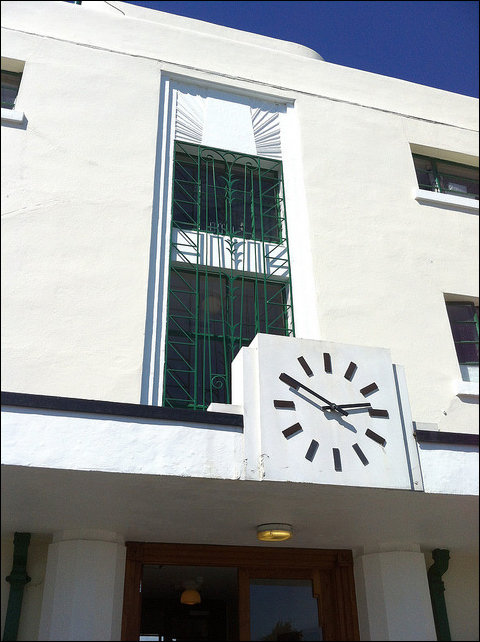
Detail of entrance to the Shoreham Terminal courtesy of and sourced from The Beauty of Transport
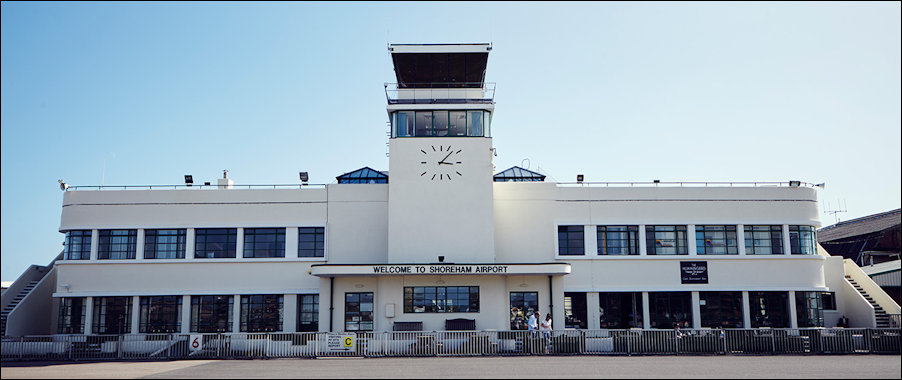
Panoramic view of the rear of Shoreham Terminal courtesy of and sourced from hereandnowmag.co.uk
Saturday, 20th June, 1936 - Vespers at the Hollywood Bowl
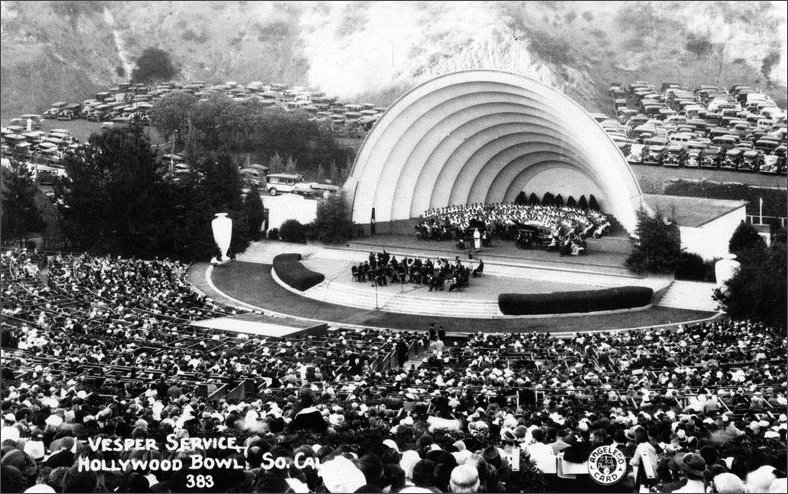
A tribute to the first "Angel of Mercy," Florence Nightingale, will be held Sunday afternoon when thousands of nurses from all parts of the United States join with Southland civic and educational leaders in a vesper service in the Hollywood bowl. The memorial program will be the opening event of the three-fold national conventions of the American Nurses' association, the National League of Nursing Education and the National Organization of Public Health Nursing, being held in Los Angeles next week. Source : cdnc.ucr.edu | More about the Hollywood Bowl here
Monday, 22nd June, 1936 - Jubilee Kiosk
Kiosk Particulars
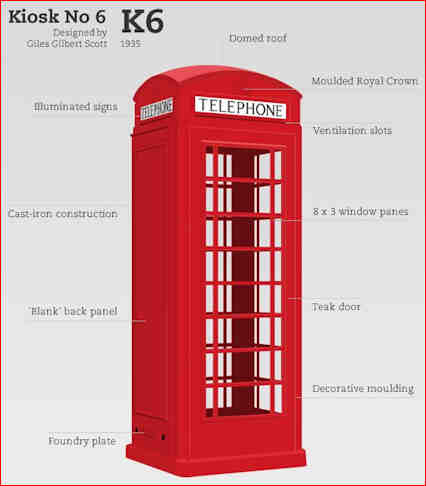
Name : Kiosk No 6 | Designed by : Giles Gilbert Scott |Designed : 1935 |Introduced : 1936 |End of production : 1968
Construction : Cast iron |Width : 3 ft 0 in
Total installed: 60,000 | Total remaining : 10,700 - Image & Kiosk Particulars Source : The Telephone Box
Kiosk No. 6 - the K6 - was introduced to commemorate the Silver Jubilee of the coronation of King George V. The 'Jubilee Kiosk', as it became known, was once again designed by Sir Giles Gilbert Scott and was similar in appearance to Kiosk No. 2, the main difference being that the vertical bars in the windows and door were spaced further apart to improve visibility. The K2 had not penetrated far outside London, but the 'Jubilee' model became the first genuinely standard kiosk and was installed all over the country. Under the "Jubilee Concession", introduced as part of that year's celebrations, kiosks were to be provided in every town or village with a post office, regardless of cost. As a result of this scheme over 8,000 new kiosks were installed, adding impetus to the spread of the K6. Source : BT | Read more here
Tuesday, 30th June, 1936 - Margaret Mitchell publishes 'Gone with the Wind'
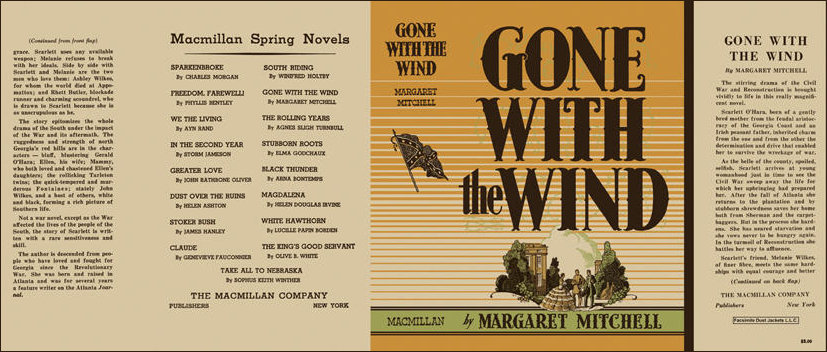
A facsimile cover of the original first edition of the book - much of the detail is missing and is reproduced below from fragments of the original cover
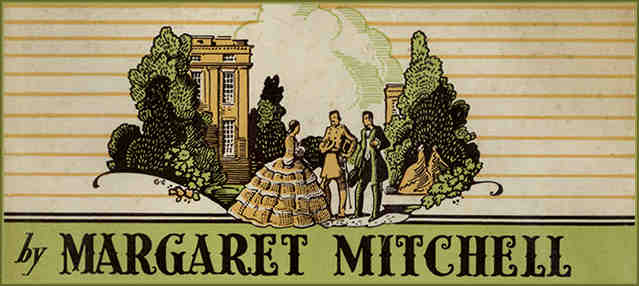
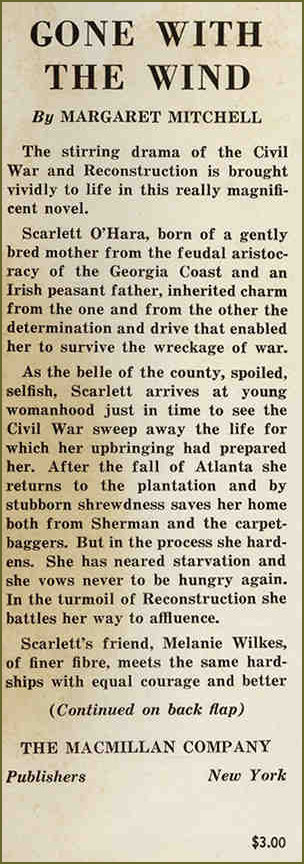
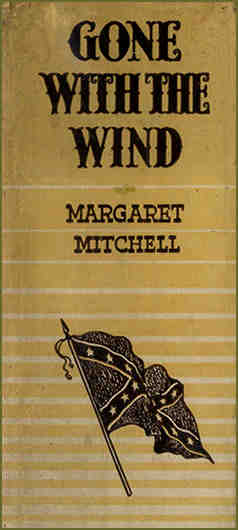
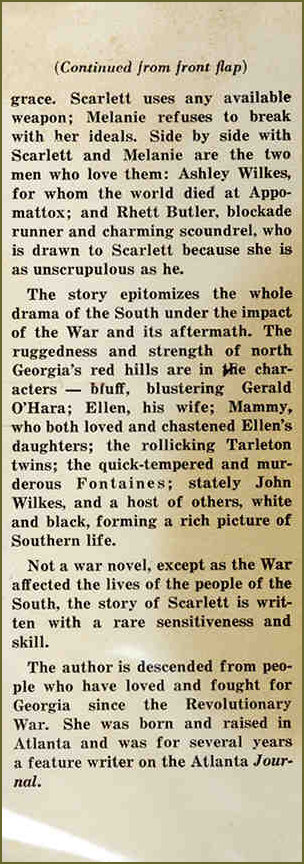
Monday, 29th June, 1936 - The Empire State Building emanates high definition TV
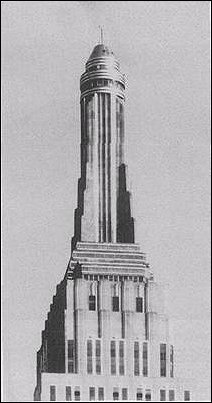
Early image of the top of the Empire State Building in preparation for receiving antennae - sourced from tech-notes.tv
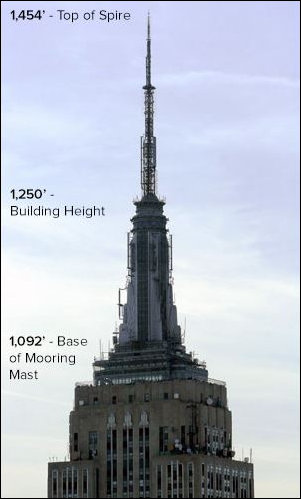
Empire State Building emanates high definition TV, 343 lines of picture definition - image courtesy & © of esbync.com
The technical bit sourced from tech-notes.tv - In 1934, NBC, cooperating with Major Edwin H, Armstrong, provided the high-power VHF transmitting facilities for tests of frequency modulation. These test transmissions continued until late in 1935 when the facilities were required for a continuation of the NBC-RCA television held tests. A new antenna with horizontal polarization was installed in 1936 and a new series of tests using 343 scanning lines per picture was initiated from the Empire State Buidling. These tests used for the first time a fixed relationship between visual and aural carriers so that receivers could be designed with a single tuning control. The tests also marked the first use of the iconoscope camera.
June 1936 - The Boots Company, Nottingham - D6 Factory opens
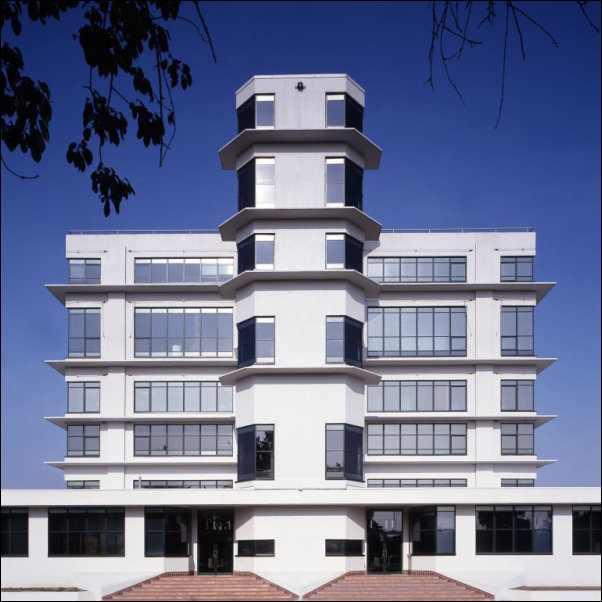
The D6 Factory facade following on from the 1933 D10 'Wet' factory (see below) - image sourced from Pinterest/Walking Architecture
"The Grade I listed building, D6, was designed by the engineer Sir E. Owen Williams who was also responsible for the construction of its sister building, the D10 ‘Wets’ factory, which produced goods such as creams, pastes and liquids. D6 was known as the ‘Drys’ factory because it was responsible for the manufacture, storage and despatch of pills and tablets as well as other products including: pastilles and lozenges, medicated confectionary, capsules and polyfusors. There were also separate rooms on the first floor which manufactured products for the Farms and Gardens Department (veterinary and specialist garden) and the Toiletry Department (powders, bath salts and bath tablets). The factory was built with efficiency in mind. Raw materials were unloaded at the north dock and stored on the third floor before naturally descending, aided by gravity, down spiral chutes, to the manufacturing plant on the second and first floors. Railway tracks also flanked both sides of the building with goods being received along one side, manufactured in the middle and despatched along the whole length of the opposite side.
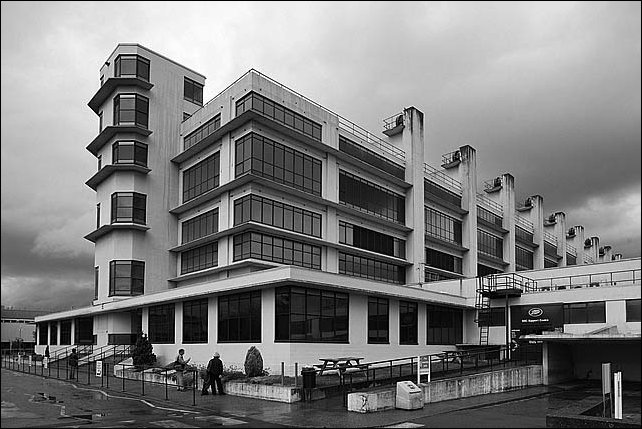
An image of the D6 showing the greater size of the factory - image sourced from trentstation.com
With its Art Deco design, the building features a distinctive reception area with a multi-storey staircase and ‘wrapped’ around windows on each landing. The area of the building covers 450,000 square foot and was estimated to cost £340,000." Sourced from : nlha.org
For more information about the D-classed buildings visit here
Saturday, 4th July, 1936 Fred Perry wins 3rd Men's Singles Wimbledon Title
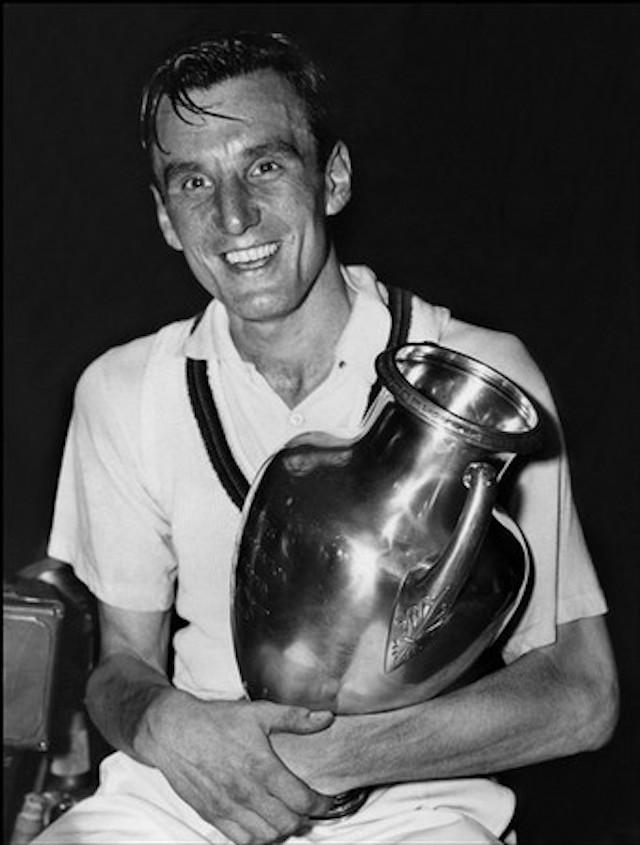
Image provided by Vice Sports as circa 1935 - which trophy it is is more blurred as there does not seem to be a sourceable picture of Perry holding the Wimbledon Trophy after any three of his victories at the AELTC
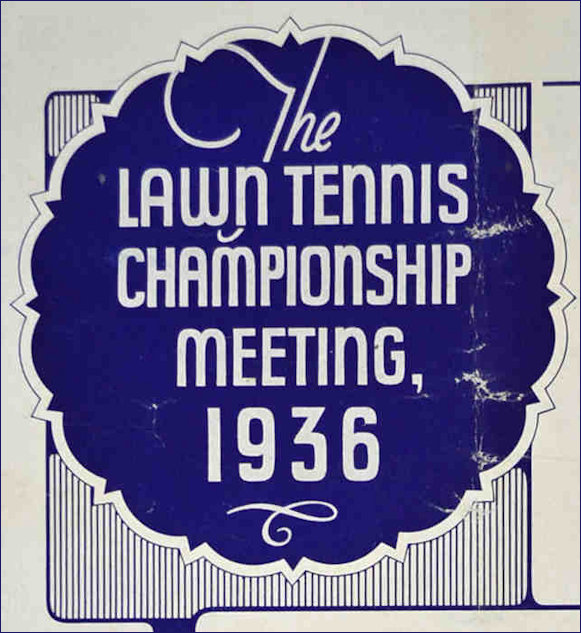
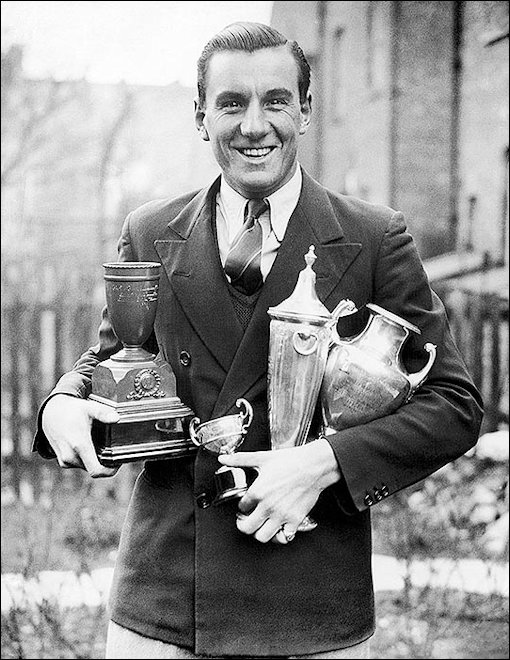
Fred Perry poses with his trophies in March 1934. He went on to win the first of his three Wimbledon men’s singles titles in the summer that year
© Keystone-France/Gamma-Keystone via Getty Images
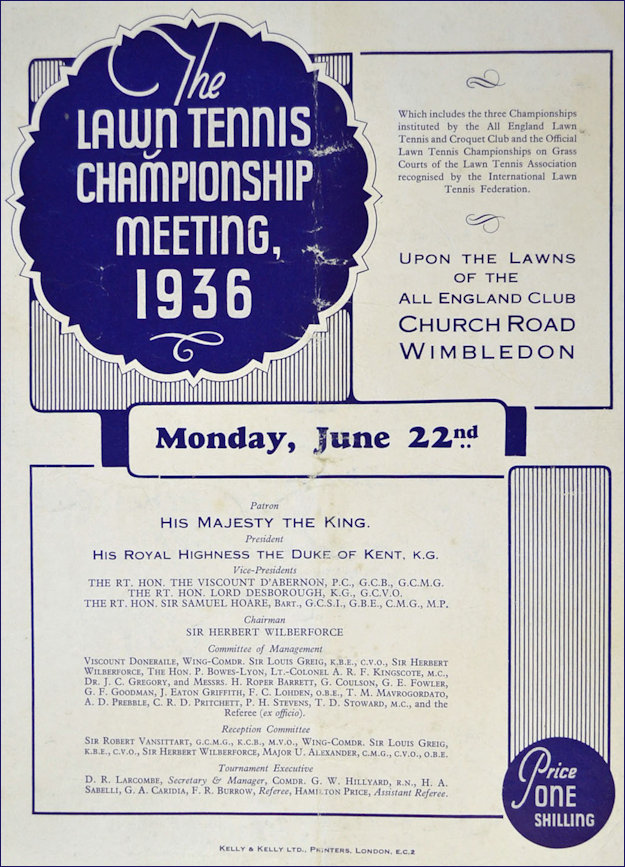
Image of the official Wimbledon programme in the historic year that Perry won his third and final Wimbledon Men's singles - image courtesy of 'The Saleroom' who described it as "1936 Wimbledon Lawn Tennis Championship programme - for day one to incl Fred Perry v Stratford – some hand written results – usual pocket fold and rubbing to exposed areas – otherwise (F) Note: Fred Perry went onto win his 3rd successive Wimbledon Men’s title"
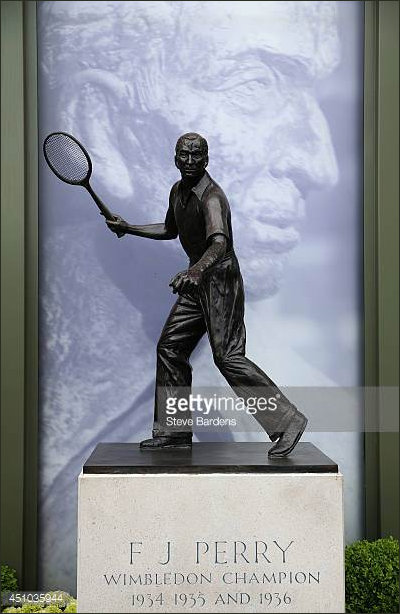
Image courtesy & © of Getty Images
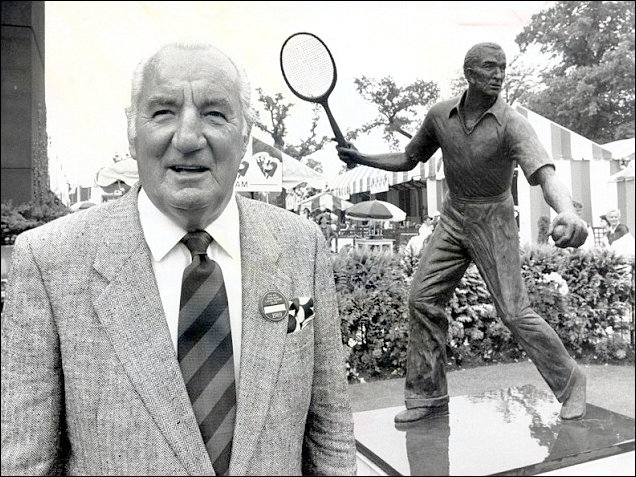
In 1984, with still no viable British player likely to wrest his Wimbledon crown, the great man himself, Fred Perry poses with the statue depicting his glory days, created to honour him and to celebrate his achievements.
From the Public Monuments and Sculpture Association (PMSA) the tribute details and description of the sculpture - Small bronze statue (1/3 life size) of Fred Perry depicted in action, holding a racquet and ball, standing on a flat bronze base. Statue mounted on a rectangular base clad in marble. Small flower stand and marble ash urn (inscribed) at foot of front side of base, added later to hold Perry's ashes after his death. Situated in small grassed enclosure surrounded by flower beds and railings.
Commissioned and donated by Perry's family to the Wimbledon All England Lawn Tennis Club
Portrait sculpture of Fred Perry to celebrate his victories at Wimbledon in the thirties. Erected in his lifetime and therefore not intended as commemorative.
History : Date of Design : None | Year of unveiling : 1984 | Unveiling details : 20th May 1984 | Commissioned by : Private commission by subject's family and donated to AELTC | Duty of care : None
From Pitch to Plinth - the Sporting Statues Project -
Subject(s): Fred Perry | Sport: Tennis Location: Wimbledon LTC, Wimbledon, London (From 1984-2010 sited just inside Gate 5)
Sculptor: David Wynne
Unveiled: 20/5/1984 | Material: Bronze | Status: In Situ Inscription(s):
Inscribed on plinth, side 1: F.J.Perry, Wimbledon Champion 1934, 1935 & 1936. David Wynne Sculptor 1984
Inscribed on plinth, side 2: Unveiled by H.R.H. The Duke of Kent G.C.M.G. G.C.V.O. A.D.C. President AELTC 20th May 1984.
Why the tennis establishment shunned Fred Perry, Britain's previous Wimbledon men's winner in 1936
From the Independent | Liam O'Brien | Sunday 7 July 2013
Born in Stockport in 1909, he was the world number one for three years, taking in four Davis Cup wins for Britain and eight major singles titles - including three Wimbledon championships between 1934 and 1936. However, in a game still ruled by the middle classes, Perry's working class roots meant he was not quite as popular among British tennis fans as you might expect. He was known as an upstart, and his ruthless ambition on the court came as something as a shock to spectators accustomed to more gentlemanly displays. A quick mover, he had an all-court game and hit a mean 'early-ball' running forehand.
When he won his first title against the Australian Jack Crawford - comfortably, with a score of 6-3 6-0 7-5 - he overheard a Wimbledon committee member saying it was a day "when the best man didn't win". His All England Club member's tie, the acknowledgement of his Wimbledon win, was dropped over the back of his seat in the dressing room. There was no word of congratulations, and the incident still irked him late into his life. "Instead of Fred J Perry the champ I felt like J Fred Muggs the chimp," he said. "The Perry balloon was certainly deflated."
Perry's off-court activities were just as notable as his tennis. He dated Marlene Dietrich, teaching her to play tennis "with great patience and lots of little passionate hugs, punctuated with rapid kissing between flying balls," according to her daughter Maria Riva. He dated Jean Harlow and Loretta Young, played tennis with Charlie Chaplin and Groucho Marx at the Beverly Hills Club, and became close with Bette Davis to the extent they were "not exactly family, but almost". At the end of 1936, he left Britain to join a professional circuit in the USA. It meant he could make money from tennis, but he could no longer play what was at the time an amateur tournament at Wimbledon.
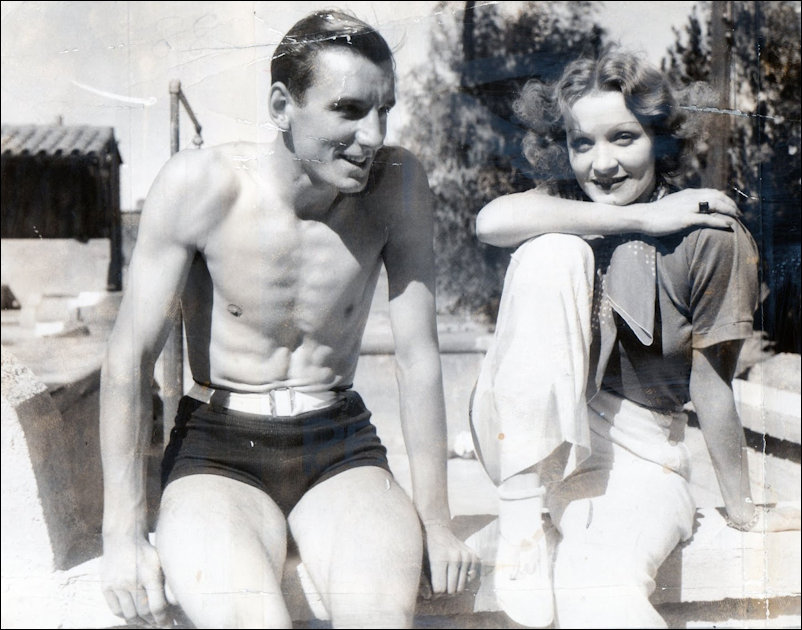
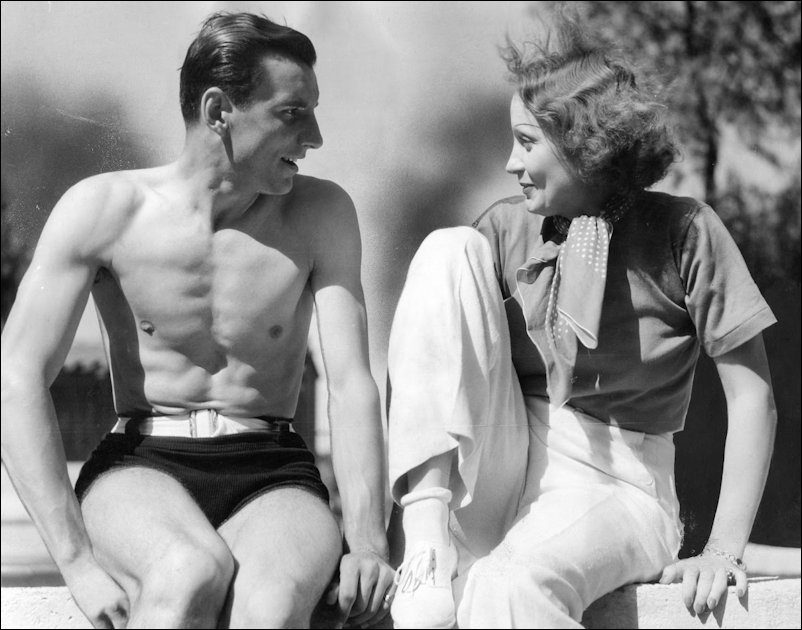
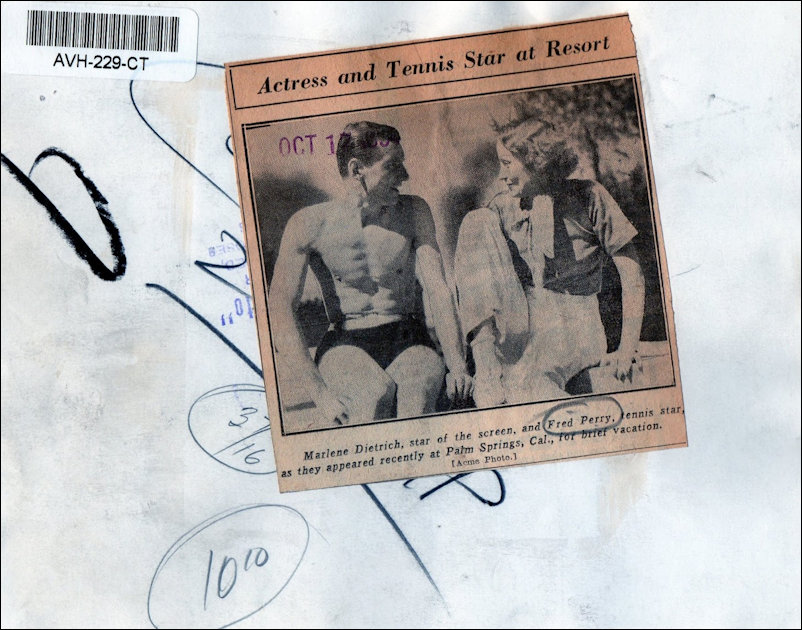
Perry and Dietrich in Palm Springs - with thanks to The Dietrich Collection for the three images above
After the Second World War, he coached and commentated, as well as building his eponymous clothing brand. Towards the end of his life, he was accepted back into the tennis fold and in 1984 a bronze statue was erected at the All England Tennis Club to commemorate the 50th anniversary of his first Wimbledon title. Perry died in 1995 at the age of 85. He was in Melbourne at the time, attending the Australian Open
Fred Perry: the icon and the outcast
From 'History Extra' (edited on this page) Kevin Jefferys reviews the career of the man who triumphed 78 years ago, Fred Perry
Britain dominated the world of lawn tennis in the mid-1930s thanks largely to Fred Perry. For three years he was the undisputed world number one, winning a string of major titles and making a vital contribution to Britain’s domination of the premier international competition in tennis, the Davis Cup.
His legacy remains powerful today. Today Perry has iconic status, but it was not always so: this champion was once Britain’s unsung tennis hero. A hundred years on from his birth, it should not be forgotten that in his prime playing days, and for many afterwards, Perry was acclaimed across the tennis world but was not universally admired in his homeland.
Top, but not ‘the best'
Journalists watching him defeat the Australian Jack Crawford to lift the Wimbledon crown in 1934 commented on the “strange lack of excitement” among spectators, and one American magazine went as far as to say: “Perry is not a popular champion at home”. In an incident that rankled for the rest of his life, Perry’s elation at taking the title turned to anger when he overheard a Wimbledon committee member saying to Crawford in the dressing room after the final that this was one day “when the best man didn’t win”. A major factor in explaining this coolness towards Perry was his social background. The Perry family had northern working class roots and Fred only had the chance to take up tennis when his father, developing a career in left-wing politics, moved after the First World War to an area of London where suburban tennis clubs were expanding rapidly. Instead of being confined exclusively to the rich, tennis was becoming an option for aspiring families such as the Perrys.
But as he sought to make his way in the game, Fred Perry faced many who saw him as not ‘one of us’ – the traditional public-school educated middle classes who still dominated British tennis as players, administrators and officials. One insider summed up the attitude towards Perry when he first won a place on the Davis Cup team by saying: “as we’ve got to have the bloody upstart, we might as well knock him into shape and try and get the best out of him”. As the dressing room episode in 1934 illustrated, even winning Wimbledon did not remove all traces of social prejudice. Perry was not entirely a passive victim of the class distinctions in British society between the wars. His abrasiveness and refusal to “let people tell me what to do or order me about” made him enemies in tennis circles. Players in the 1930s were expected to behave with decorum; ‘gentleman Jack Crawford’ was known for his exemplary court manners. Fred Perry, by contrast, possessed a ruthless streak, refused to conceal his ambition and indulged in gamesmanship such as making offensive personal remarks to opponents.
Despite dominating the world scene he offended the sensibilities of well-to-do Wimbledon spectators because his court persona was so much at odds with the ethos of the day. It also mattered that tennis remained firmly wedded to amateur principles. Lacking the pedigree and temperament of traditional gentleman amateurs such as Crawford, Perry clashed with the authorities and was increasingly tempted to cash in on his global fame. Simmering difficulties with the LTA continued until, at the end of 1936, he left Britain to join a small professional circuit living and touring mostly in the USA. This move enabled him to make large sums of money but meant he was banned from the world’s top amateur events, including Wimbledon and the Davis Cup. At the start of 1937, Perry thus found himself a sporting outcast in his homeland. He was relieved of his honorary membership of the prestigious All England Club – awarded to him as Wimbledon champion – and when his professional tour visited Britain he was barred from appearing on the courts of any LTA-affiliated club. There was no campaign in Britain in the late 1930s to find and cultivate new champions in Perry’s wake. Instead, the most successful player the nation had produced became almost a non-person in the eyes of the tennis establishment.
After the Second World War, Perry built a new life based around business enterprises (notably the famous Fred Perry sportswear label), coaching and commentating. Based mainly in the USA, which he found less hidebound than Britain about social distinctions, his frosty relationship with the All England Club and the LTA improved slowly over the years, especially when tennis finally embraced professionalism after 1968. Even so, it was only towards the end of his life that reconciliation became complete. The same bodies that once shunned him were ever more anxious to honour Perry, in part because his reputation soared as the years passed in which no British man was able to match his success. His appreciation of the unveiling of the statue in 1984 was enhanced when the All England Club chairman said he hoped that Fred agreed Wimbledon was “today the most hospitable of clubs”, in contrast to the unfriendliness of earlier times.
In the same year, a quarter of a century ago, Perry was the only tennis player listed in a survey of 2,000 Britons aimed at finding the ‘Best of the Best’ British sportsmen of the 20th century. At long last, Fred Perry was no longer Britain’s unsung tennis hero. His place as a domestic sporting legend was secure.
1936: Fred Perry’s third title
Fred Perry’s achievement in winning Wimbledon in three successive years still shines beacon-bright. When he pulled off the first hat-trick of titles it marked a quarter of a century since Britain’s previous men’s winner, Arthur Gore in 1909 (the year Fred was born), and since then 75 years have passed without a British men’s champion. The fact all three of Perry’s victories were achieved in straight sets was testimony to a fitness regime, which included training with the Arsenal football team, and the first was possibly the most impressive when in the 1934 final he overcame the defending champion Jack Crawford 6-3, 6-0, 7-5. Gottfried von Cramm, the first German to reach a Wimbledon men’s final, was Perry’s 6-2, 6-4, 6-4 victim in the 1935 final, but there was concern when von Cramm defeated Perry in the 1936 French Open final. Aided by the knowledge that the German was carrying a leg injury, though, Perry swept home 6-1, 6-1, 6-0. And after winning the US title two months later, Perry was lost to the professional game. Source - the All England Lawn Tennis Association
Monday, 6th July, 1936 - Agatha Christie publishes 'Murder in Mesopotamia'
Crime Club 1st edition
Saturday, 18th July, 1936 - Spanish Civil War breaks out
l to r Lithograph by Carles Fontserè calling for ambulances for all - image courtesy of the Imperial War Museum and propaganda poster calling 'For our Country and Bread and Justice' - image courtesy of the V&A
In the 1930s, Spain was a deeply divided country that was politically torn between right-wing Nationalist and left-wing Republican parties. The Nationalist party was made up of monarchists, landowners, employers, the Roman Catholic Church and the army. The Republicans consisted of the workers, the trade unions, socialists and peasants. Economically, the country had been deeply hit by the Great Depression after the Wall Street Crash. Partly due to this turmoil, in 1929 the military dictatorship that had ruled Spain since 1923 collapsed. In 1931 the King abdicated after the Republicans came to power. There followed a period where the two political rivals had periods in power as the elected government. The country was so divided and unstable that in 1936 the army rebelled and forcibly removed the Republicans from power. Civil war ensued.
The better organised and better equipped Nationalist forces won the war after Madrid was captured in March 1939. Hitler's position in Europe was now strengthened since he had another potential ally in the right-wing dictator of Spain, General Franco. Participation and co-operation in the Spanish war strengthened the bond between Italy and Germany. As a result, the Rome-Berlin Axis was formed. Italy and Germany were now firm allies. By ignoring the Non-Intervention Committee and its chief architects, France and Britain, Hitler had shown his strength in European affairs. Source and to read more : BBC | Spanish History more
Saturday, 25th - Tuesday, 28th July, 1936 - GB wins the Davis Cup
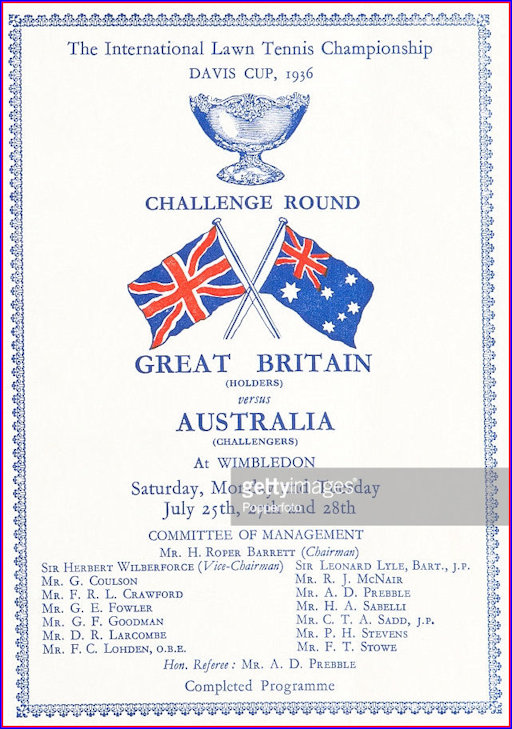
The Davis Cup programme of 1936 © Getty Images
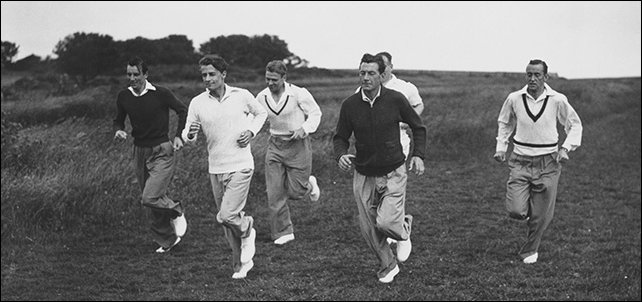
The team of Austin, Perry, Hughes, Tuckey and Dan Maskell running at Beachy Head in Eastbourne, 14 July 1936 image courtesy of LTA and © of Getty images
The Davis Cup trophy was originally a silver punchbowl, to which plinths have been added over time to include the winners' plaques. The trophy was donated by US tennis player Dwight Davis. He founded the competition in 1900 and it's named after him.
The current format of the competition is the same as in 1936. A best-of-five with two singles matches, a doubles, followed by reverse singles. But it was played over Saturday, Monday and Tuesday rather than Friday, Saturday and Sunday.
In 1936, Britain won the first two matches but lost the third (doubles) and fourth, taking it to a fifth round decider. It was down to Fred Perry to win Britain the trophy 3-2 by beating Jack Crawford in straight sets. Perry is famously the last British man before Murray to win Wimbledon (coincidentally also in 1936).
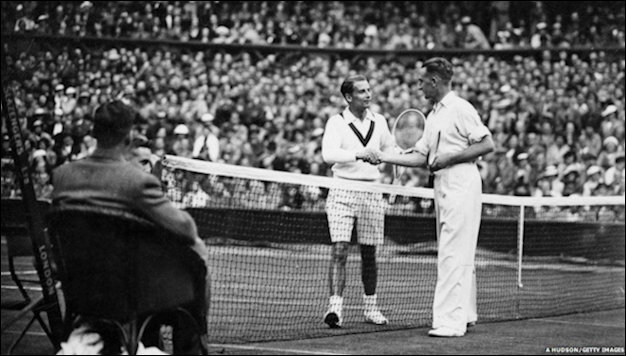
1936: Britain won the opening match - Bunny Austin beat Jack Crawford in four sets
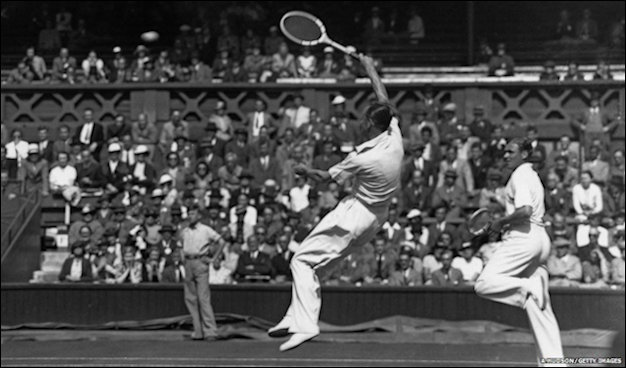
1936: Britain's Raymond Tuckey and Pat Hughes in their doubles match (they lost)
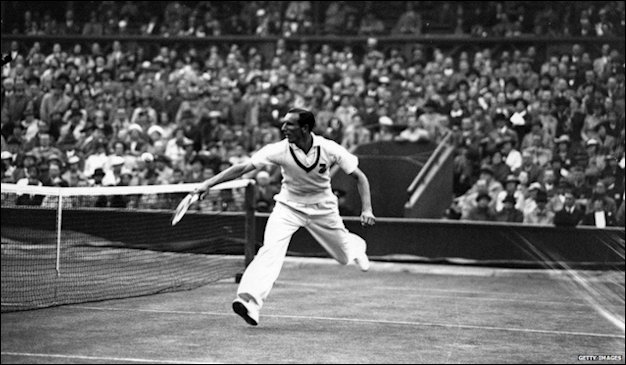
1936: Britain's Fred Perry playing against Jack Crawford in the decider
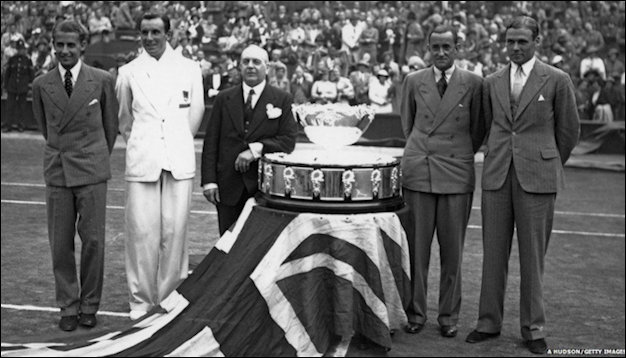
1936: Britain's winning team (l to r Bunny Austin, Fred Perry, Raymond Tuckey and Pat Hughes - they beat Australia 3-2) with the Davis Cup trophy - images © and courtesy of BBC
Saturday, 1st August, 1936 - Adolf Hitler Opens the Berlin Olympics (dubbed The 'Nazi' Olympics)
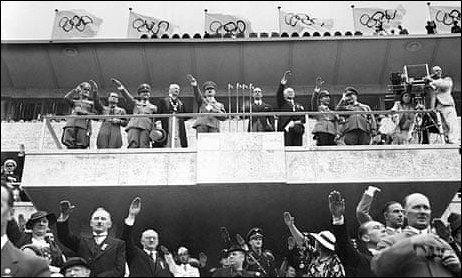
Adolf Hitler opens the 1936 Summer Games in Berlin. Photograph sourced from the Austrian Archives/CORBIS via The Guardian
On August 1, 1936, Hitler opened the XIth Olympiad. Musical fanfares directed by the famous composer Richard Strauss announced the dictator's arrival to the largely German crowd. Hundreds of athletes in opening day regalia marched into the stadium, team by team in alphabetical order. Inaugurating a new Olympic ritual, a lone runner arrived bearing a torch carried by relay from the site of the ancient Games in Olympia, Greece. Forty-nine athletic teams from around the world competed in the Berlin Olympics, more than in any previous Olympics. Germany fielded the largest team with 348 athletes. The US team was the second largest, with 312 members, including 18 African Americans. American Olympic Committee President Avery Brundage led the delegation. The Soviet Union did not participate in the Berlin Games (or any Olympics until the 1952 Helskinki Games when many politicians, journalists, and competitors regarded the Olympics as an important battle in the Cold War). Source : Holocoust Encyclopaedia
Wednesday, 9th September, 1936 - 'Odeon' Muswell Hill opens
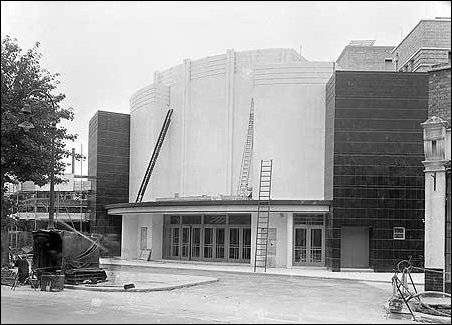
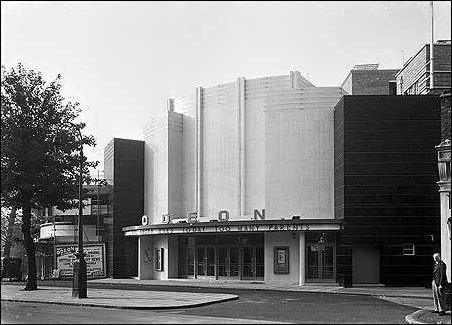
The 'Odeon' Muswell Hill under construction (left - image courtesy of Bowes & Bounds via modernism in metroland) and completed (right - image courtesy of Modern Tourists)
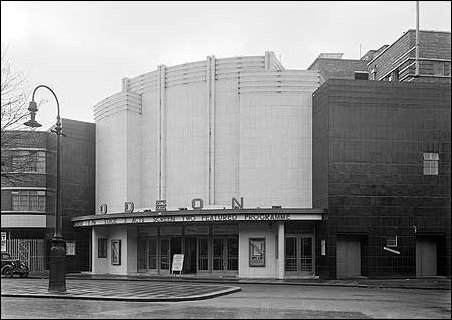
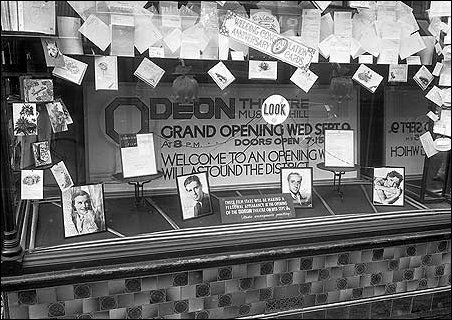
A view of the front of the cinema and a window display with photographs of the stars appearing at the opening ceremony of the cinema on September 9th 1936 - images courtesy & © of Viewfinder.historicengland
Read more : Historic England | Cinema Treasures | Local History - More about Odeon and 1930s Cinemas here
Sunday, 4th October, 1936 - The Battle for Cable Street
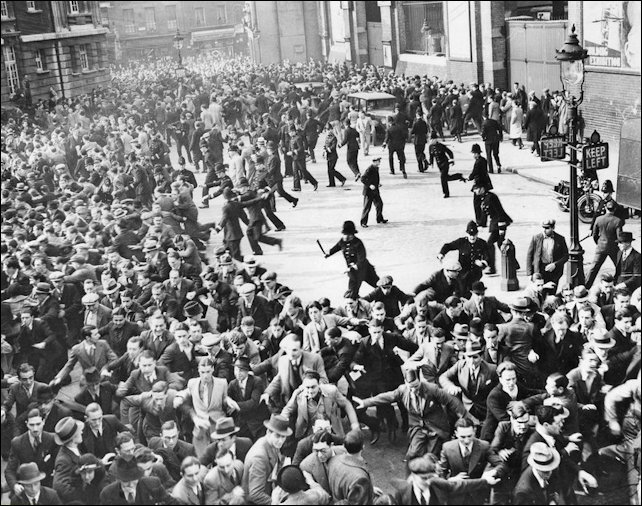
Riots erupted between anti-Fascists and Blackshirts (British Fascists) when Mosley's supporters were gathering in Great Mint Street for a march through the East End of London in what is now called the Battle of Cable Street on Oct. 4, 1936 - Image and dialogue sourced from Time.com and Getty
Read more : TIme.com | Dedicated Cable Street Site
Oswald Mosley - British Fascist ...
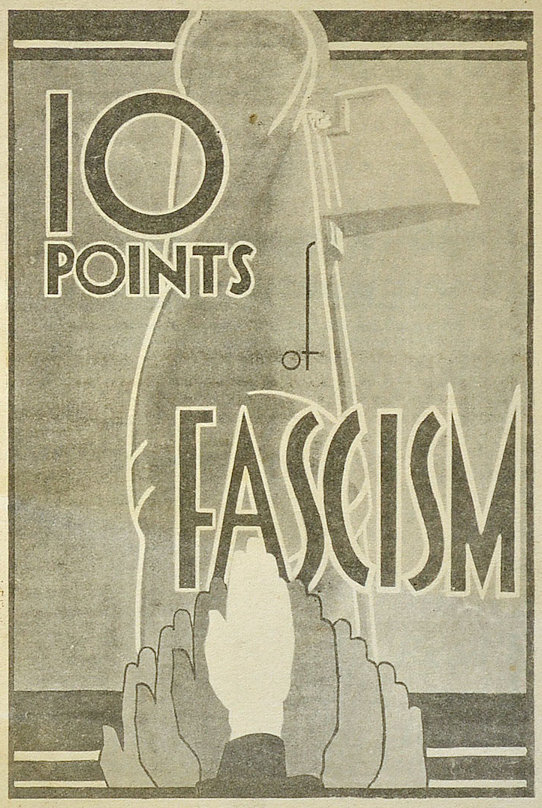
... who gave us a guide to the '10 points of Fascism'** - image sourced from the-saleroom.com
** 1. Patriotism & Revolution | 2. Action | 3. Fascist Organisation | 4. Unemployment & the Modern Problem | 5. The Corporate State | 6. The Export Trade | 7. The Fascist Empire | 8. Agriculture - A Fascist 3-year Plan | 9. Aliens & International Finance | 10. Leadership-Parliament-Liberty
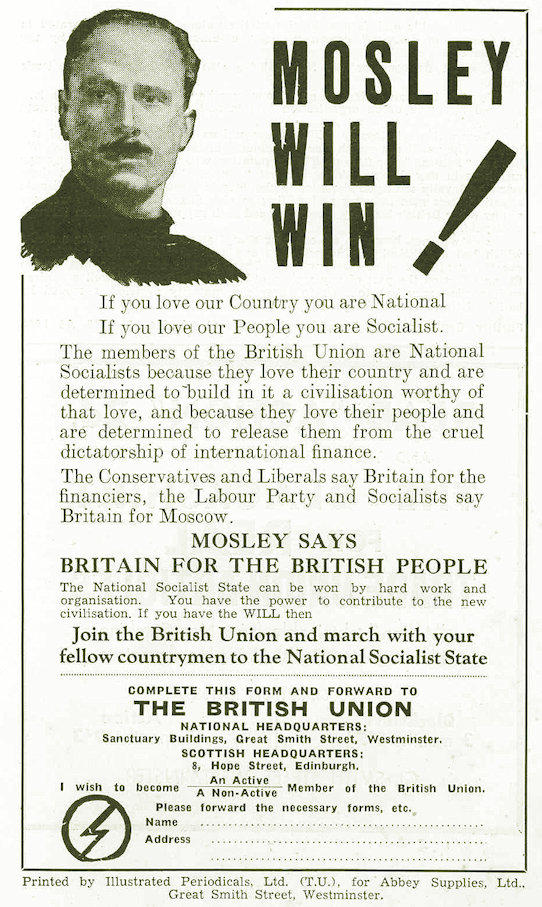
Advertisement for the British Union [of Fascists], undated [1930s] - This is on the back cover of a British Union of Fascists pamphlet entitled 'Strike Action or Power Action', on the fascists' relationship with trade unions. Source : Warwick Library
Monday, 5th October, 1936 - The Jarrow March begins
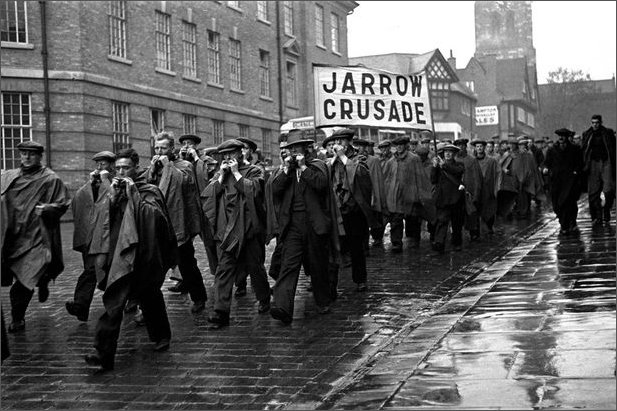
The Jarrow Crusaders marching to London in 1936 - image courtesy & © of Getty via the Mirror
Monday, 2nd November, 1936 - BBC Television begins Broadcasting (80th Anniversary)
Muswell Hill, London - 2nd of November 1936
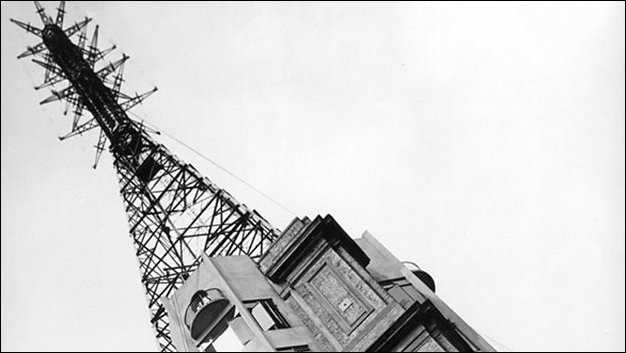
It was a momentous time: the rise of Nazi Germany reflected in Mosley’s rally in Mile End Road; the economic depression symbolised in the Jarrow arch which began the following day; and a month after those events, something that could seem of lesser consequence, but which proved more enduring than either: the launch of BBC TV.
At the time it is thought only 500 television sets had been sold in Britain to a target market limited by the expected range of the transmissions, a 25-mile radius centred on Alexandra Palace where the studios and the transmitter were found. Sometimes it feels as if the BBC never got the memo about that viewership having changed.
The razzmatazz seen with modern station-launches was not the thing at the BBC of the 1930s: instead certain senior figures in the organisation gathered in a dully decorated studio and made speeches heralding the new service.
This was the first high image-resolution service of the time, or rather the first two such services given that it had not yet been decided whether to go with the Baird 240-line, or Marconi 405-line technology. The latter, technically superior system soon triumphed, but the honour of inaugurating the BBC Television service proper went to the Baird version, decided by the toss of a coin. The Marconi EMI one followed it after a short intermission to shift studios, with the same suits making the same speeches, thus establishing BBC TV’s love of repeats on its very first day. Source : informationBritain
On the 75th Anniversary (2011) the BBC wrote:
On 2 November 1936, the BBC launched the first ever high definition TV service in the world, from Alexandra Palace. One of the first broadcasts featured the musical theatre and film actress, Adele Dixon, who performed the very first rendition of the specially commissioned ‘Magic Rays of Light’, as seen in the video clip above. By the late 1950s Alexandra Palace had become the BBC’s main production centre for television broadcasts, producing ground-breaking programmes such as ‘Picture Page’ (the first audience interaction TV programme), ‘The Grove Family’ (the nation’s first soap), children’s favourite Muffin the Mule, significant historical events such as the Queen’s Coronation in 1953, and becoming the home for TV News and the Open University.
First regular hi-definition television service 2nd November 1936
At 3pm on 2 November 1936 the BBC began the world's first regular hi-definition television service, from specially constructed studios at Alexandra Palace in North London. As part of this, two different technical systems were being tested on alternate weeks for six months: John Logie Baird's mechanical system producing pictures of 240 lines, and the EMI-Marconi electronic system, which produced images of 405 lines. On the toss of a coin, Baird's system inaugurated the service, followed by EMI-Marconi's. The latter was to prove the winning system.
The formal opening ceremony was followed by a Movietone newsreel and then a variety show, featuring Adele Dixon and the BBC Television Orchestra. A short documentary, Television Comes to London, revealed the preparations leading up to the launch. In all, the service was on the air for two hours on its first day.
BBC Director General John Reith did not like the new medium, and in later life said he never watched television. However, he was in a minority as television became the dominant medium of the twentieth century. The term hi-definition as used in 1936 was defined as a minimum of 240 lines, and was applied in contrast to Baird's earlier system which used only 30. Today, standard definition at 625 lines is being replaced by digital hi-definition, which offers picture resolution of 1080 lines.
The full programme on the first day of transmission - source BBC
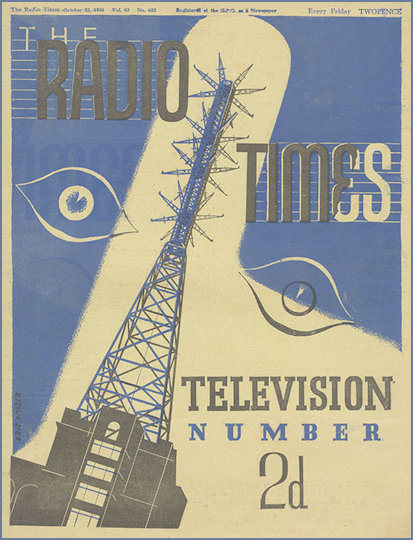
The cover of the Radio Times for the week when broadcasting was scheduled to start
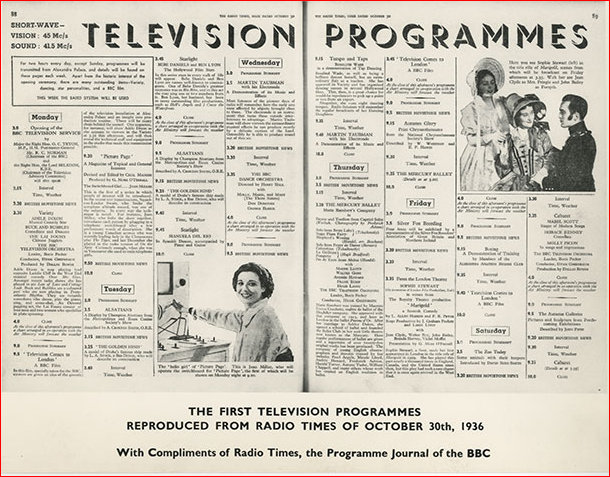
The first day
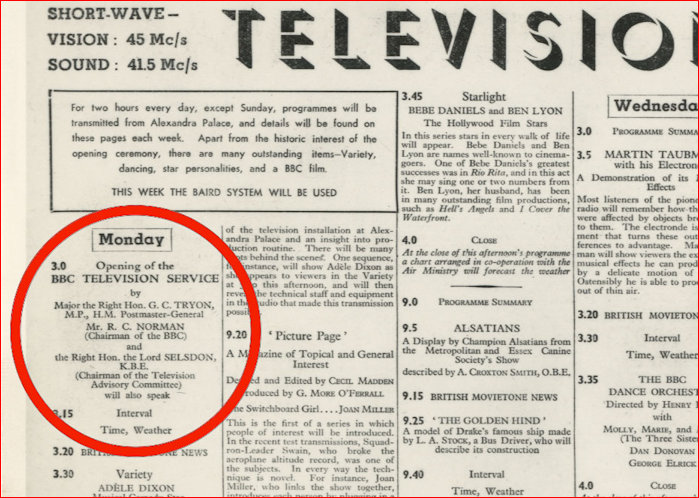
Detail of the first ever day of television broadcasting - all images courtesy and © of the BBC
Listings
15.00 : Opening of the BBC Television Service
by Major the Right Hon. G.C. Tryon, M.P., H.M. Postmaster-General.
Mr. R.C. Norman (Chairman of the BBC) and the Right Hon. the Lord Selsdon, K.B.E. (Chairman of the Television Advisory Committee) will also speak.
Contributors
Speaker: the Right Hon. G.C. Tryon, M.P.
Speaker: H.M. Postmaster-General Mr. R.C. Norman
Speaker: The Right Hon. the Lord Selsdon, K.B.E.
15.15 : Interval
Time, Weather
15.20 : British Movietone News
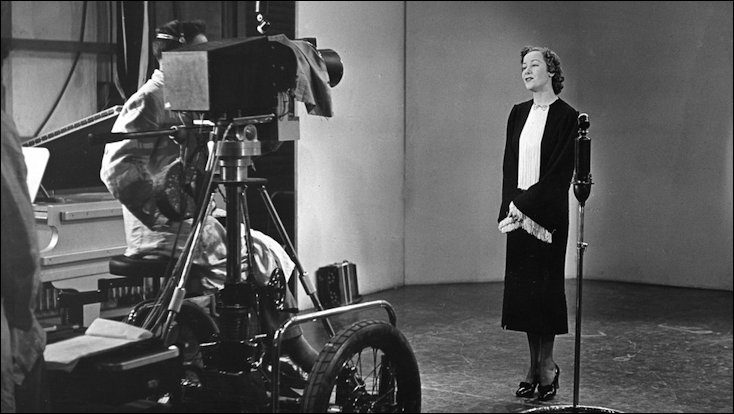
The caption to this image is 'Matt Cooke, chair of Alexandra Park And Palace Trust said the first broadcast in 1936 "not only paved the way for a new kind of social entertainment, but it also prompted technological advancements in the way we communicate with each other which still impact on us today"' - there is no acknowledgement or identity attributed to the anonymous, but very elegant, female presenter.
15.30 : Variety
Adèle Dixon - Musical Comedy Star
Buck and Bubbles - Comedians and Dancers
The Lai Founs - Chinese Jugglers
The BBC Television Orchestra - Leader, Boris Pecker; Conductor, Hyam Greenbaum
Adèle Dixon is now playing lead opposite Laddie Cliff in the West End musical comedy "Over She Goes". Amongst recent radio shows she has played in are "Lots of Love" and "Cottage Loaf". Buck and Bubbles are a coloured pair who are now playing in "Transatlantic Rhythm". They are versatile comedians who dance, play the piano, sing, and cross-chat. An Oriental juggling act, the Lai Founs consist of four men and two women who specialise in plate-spinning.
Contributors
Musical Comedy Star: Adèle Dixon
Comedians/Dancers: Buck and Bubbles
Jugglers: The Lai Founs
Musicians: The BBC Television Orchestra
Leader: Boris Pecker
Conductor: Hyam Greenbaum
Producer: Dallas Bower
16.00 : Close
At the close of this afternoon's programme a chart arranged in co-operation with the Air Ministry will forecast the weather
21.00 : Programme Summary
21.05 : Television Comes to London
A BBC Film
In this film, specially taken for the BBC, viewers are given an idea of the growth of the television installation at Alexandra Palace and an insight into production routine. There will be many shots behind the scenes. One sequence, for instance, will show Adele Dixon as she appears to viewers in the Variety at 3.30 this afternoon, and will then reveal the technical staff and equipment in the studio that made this transmission possible.
Contributors
Singer: Adele Dixon
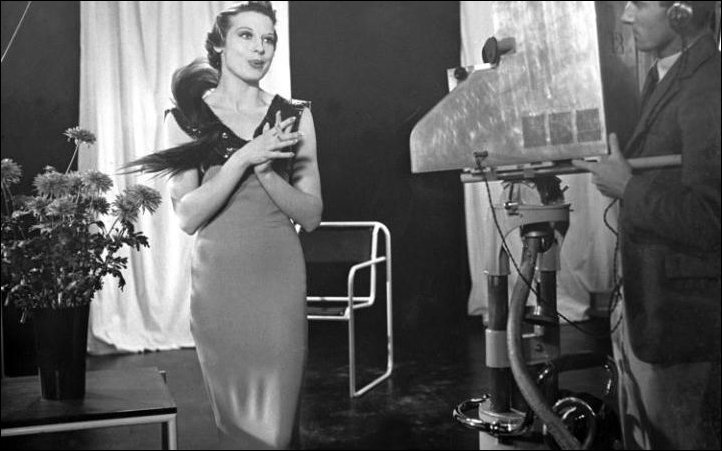
Adele Dixon sang a song about the "mystic rays" of television - Image courtesy and © of the BBC
Picture Page
A Magazine of Topical and General Interest.
This is the first of a series in which people of interest will be introduced. In the recent test transmissions, Squadron-Leader Swain, who broke the aeroplane altitude record, was one of the subjects. In every way the technique is novel. For instance, Joan Miller, who links the show introduces each person by plugging in a telephone switchboard after a few preliminary words of description. She is a young Canadian actress who was recently leading lady at the Clemenceau play "The Tiger", and last December she played in the radio version of "On the Spot". Curiously enough, when she was in Vancouver she used to train telephone operators.
Contributors
Devised and edited by: Cecil Madden
Produced by: G. More O'Ferrall
The Switchboard Girl: Joan Miller
British Movietone News
22.00 : Close
Read 'The Story of BBC Television - Television as we know it' here
Read how the BBC plan to recreate this first night of broadcasting in The Telegraph
Read about me at the BBC here
Saturday, 21st November, 1936 - BBC televises first ever Gardening Programme
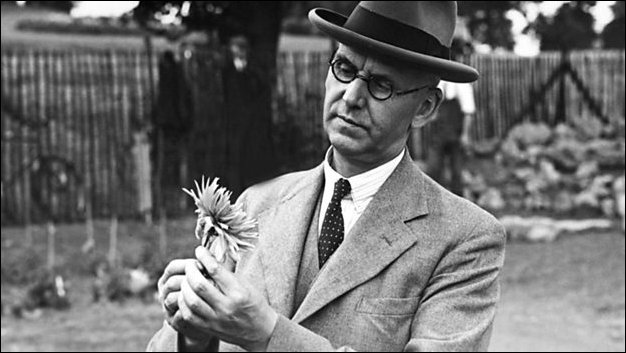
'Good afternoon. Well, it's not much of a day for gardening, is it?' - Mr. Middleton' famous catchphrase - image and dialogue © and courtesy of the BBC
During the Second World War Middleton was happy to lend his support to the government Dig for Victory campaign, encouraging listeners to grow vegetables on every spare piece of land. Mr Middleton was also the obvious choice when In Your Garden was tried out on the early television service in 1936.
From Parks & Gardens UK - 'Mr Middleton’s success on radio put him a good position when television broadcasting began and on 21 November 1936 he presented in the first gardening program. Sadly there are no surviving recordings since the recording tape was expensive and so continually reused.'

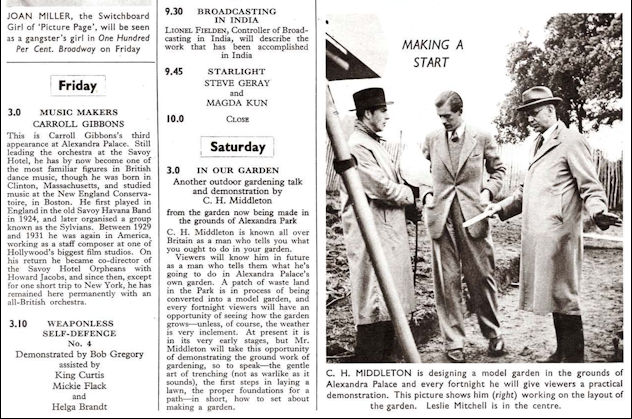
The 4th of June 1937 Radio Times edition extract featuring Mr. Middleton's new venture in the grounds of Alexandra Palace
Monday, 23rd November, 1936 - 'Life' Magazine is launched
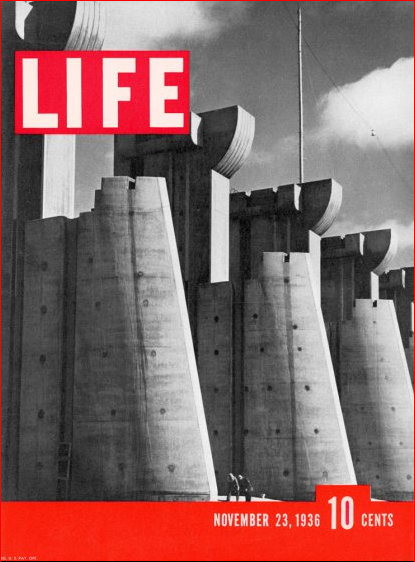
Luce set the tone of the magazine with Margaret Bourke-White’s stunning cover photograph of the Fort Peck Dam, which has since become an icon of the 1930s - image courtesy and © of Life Magazine
On November 23, 1936, the first issue of the pictorial magazine Life is published, featuring a cover photo of the Fort Peck Dam by Margaret Bourke-White.
Life actually had its start earlier in the 20th century as a different kind of magazine: a weekly humor publication, not unlike today’s The New Yorker in its use of tart cartoons, humorous pieces and cultural reporting. When the original Life folded during the Great Depression, the influential American publisher Henry Luce bought the name and re-launched the magazine as a picture-based periodical on this day in 1936. By this time, Luce had already enjoyed great success as the publisher of Time, a weekly news magazine.
From his high school days, Luce was a newsman, serving with his friend Briton Hadden as managing editors of their school newspaper. This partnership continued through their college years at Yale University, where they acted as chairmen and managing editors of the Yale Daily News, as well as after college, when Luce joined Hadden at The Baltimore News in 1921. It was during this time that Luce and Hadden came up with the idea for Time. When it launched in 1923, it was with the intention of delivering the world’s news through the eyes of the people who made it.
Whereas the original mission of Time was to tell the news, the mission of Life was to show it. In the words of Luce himself, the magazine was meant to provide a way for the American people “to see life; to see the world; to eyewitness great events … to see things thousands of miles away… to see and be amazed; to see and be instructed… to see, and to show…” Luce set the tone of the magazine with Margaret Bourke-White’s stunning cover photograph of the Fort Peck Dam, which has since become an icon of the 1930s and the great public works completed under President Franklin Roosevelt’s New Deal.
Life was an overwhelming success in its first year of publication. Almost overnight, it changed the way people looked at the world by changing the way people could look at the world. Its flourish of images painted vivid pictures in the public mind, capturing the personal and the public, and putting it on display for the world to take in. At its peak, Life had a circulation of over 8 million and it exerted considerable influence on American life in the beginning and middle of the 20th century.
With picture-heavy content as the driving force behind its popularity,the magazine suffered as television became society’s predominant means of communication. Life ceased running as a weekly publication in 1972, when it began losing audience and advertising dollars to television. In 2004, however, it resumed weekly publication as a supplement to U.S. newspapers. At its re-launch, its combined circulation was once again in the millions. - Source History.com
Monday, 30th November, 1936 - Fire guts Crystal Palace
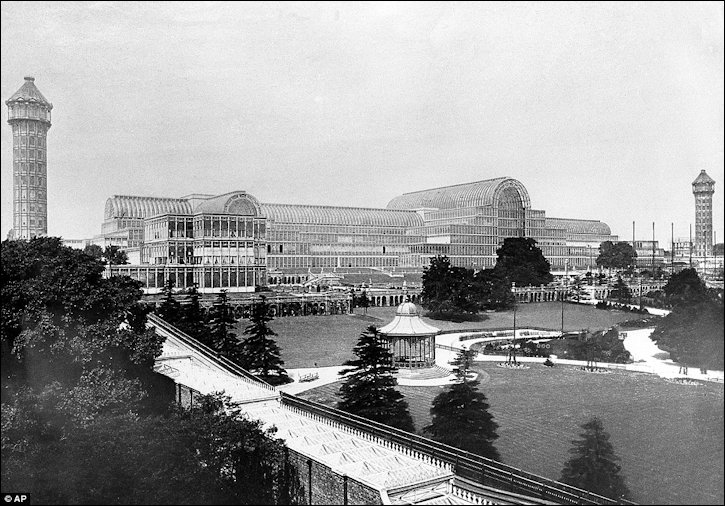
The giant Crystal Palace (built 1851) centre before it was destroyed in a fire in 1936.
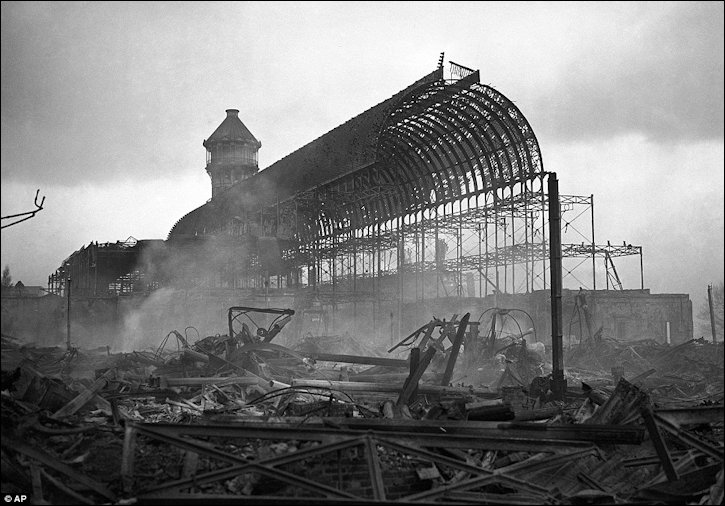
The original Palace stretched from what is now the bus station to the TV mast - The burnt out shell of a building which was left after the blaze in 1936. Nearly 80 years after it was destroyed, work may begin on a replacement in winter 2015 - both images courtesy of the Associated Press via the Daily Mail
Disaster Strikes - source Crystal Palace Foundation
In 1914 a charitable trust under the control of the Ministry of Education was formed and the trustees hired Henry James Buckland (lately Manager of Harrogate Spa) as the Manager of the Crystal Palace. He was a firm but fair man who had a great love for the Crystal Palace - so much so that he even named one of his daughters Chrystal. Because of the War he was not able to take up his duties until the Navy had moved out. When Henry took over it was evident that the deterioration suffered by the building up to 1913 had worsened further still during the First World War through being used as a Royal Naval Shore Station - HMS Victory. Over 125,000 men and women serving in the Royal Naval Air Service (RNAS), Royal Naval Division (RND), Royal Naval Volunteer Reserve (RNVR) and Women's Royal Naval service (WRNS) were trained there for war service.
Shortly after the War John Logie Baird opened workshops, a television studio and tube manufacturing plant in various parts of the Palace and grounds. Henry and his staff performed miracles on the building and Park, repairing, cleaning, improving and the Palace was even starting to show a slight profit. But on Monday 30th November 1936 something happened to change the now Sir Henry's life and that of the whole area for ever.
At about 7pm he and Chrystal left their house ('Rockhills') on the northern corner of Crystal Palace Parade, to walk their dog. He walked towards the Crystal Palace and noticed a red glow in the building. He ran inside to see two night-watchmen attempting to extinguish a small fire in the office area in the centre transept. It soon became obvious that the situation was very serious. The first fire brigade call was received by Penge fire station at 7:59pm, the first fire engine arriving at 8:03. By the morning of Tuesday 1st December the building was no more. There had been 88 fire engines, 438 officers men from 4 fire brigades and 749 police officers on duty that historic night. The cause was never truly established and stories of arson abounded but because of the size of the building and the huge amounts of flammable material it contained, the cause was probably just a terrible accident. Shortly after the fire there was held a pre-booked engagement that opened a new chapter in the life of Crystal Palace - work started on constructing a tarmac motor-racing track. Following the fire, work started on removing the ironwork and by 1937 most of it had been removed by W. Ward & Co. Ltd, scrap merchants.
Wednesday, 2nd December, 1936 - The Israel Philharmonic Orchestra forms
Original (signed) Concert Programme - image courtesy of 'Orchestra of Exiles' (PBS.org)
The Israel Philharmonic Orchestra rehearses ahead of its first concert in 1936 - image courtesy of Israel Today (watch the video as well)
Toscanini and Huberman at the first concert of the Palestine Symphony Orchestra 1936 - image courtesy of 'Seen and Heard International'
From : 'Orchestra of Exiles' (PBS.org) There is no commercial recording of the Palestine Symphony Orchestra’s first season of concerts that began December 26, 1936, and continued through January 1937, conducted by Arturo Toscanini. We can however hear the works the symphony chose for its very significant inaugural concert. The first Palestine Symphony concert in Tel Aviv was attended by 3,000, including British High Commissioner Arthur Wauchope, Chaim Weizmann, David Ben Gurion, Golda Meier and Tel Aviv’s Mayor Dizengoff. In an effort to recreate classical music history, we’ve curated a Spotify playlist that features the works that millions of listeners around the world heard in broadcasts from Palestine, now Israel. Arturo Toscanini chose the selections, and pointedly included a work by Felix Mendelssohn (“A Midsummer Night’s Dream”) because the composer was Jewish and Adolf Hitler had banned Jewish composers from German concert halls. Both Toscanini and orchestra founder Bronislaw Huberman signed the program seen on this page. In 1948, the orchestra became the Israel Philharmonic Orchestra.
Tuesday, 8th December, 1936 - Barbara Hulanicki Born
Founder of the Iconic 'Biba' franchise - Barbara Hulanicki, OBE born on 8th December, 1936
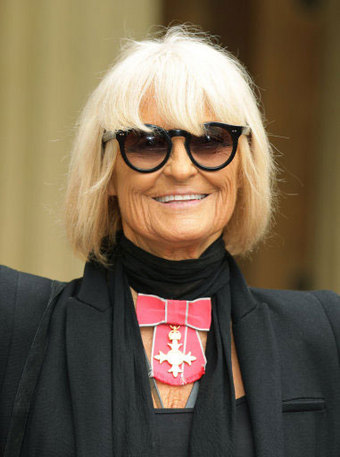
Thursday, 10th December 1936 - Edward VIII signs the Instrument of Abdication
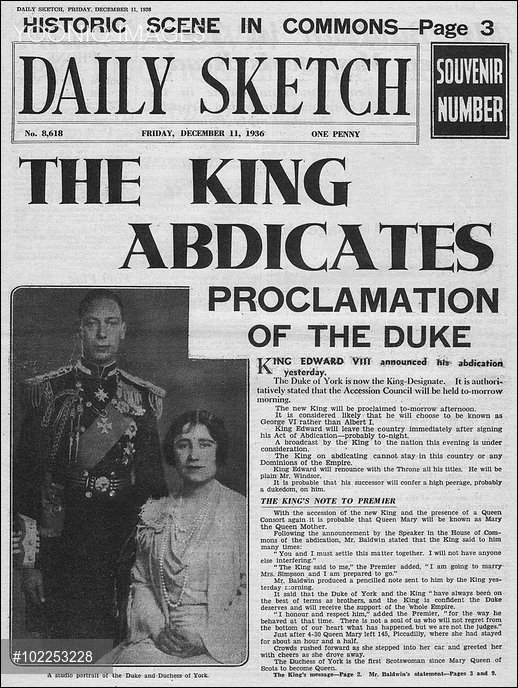
The Daily Sketch dated 11th December 1936 - image courtesy of yooniqueimages via ® John Frost Newspapers/Mary Evans Picture Library
Proclamation of the Duke
King Edward VIII announced his abdication yesterday. The Duke of York is now the King-Designate. it is authoritatively stated that the Accession Council will be held tomorrow morning. The new King will be proclaimed tomorrow afternoon. It is considered likely that he will choose to be known as George VI rather than Albert I. King Edward will leave the country immediately after signing his Act of Abdication - probably tonight. A broadcast by the King to the nation this evening is under consideration. The King on abdicating cannot stay in this country or any other Dominions of the Empire. King Edward will renounce with the Throne all his titles. He will be plain Mr. Windsor. It is probable that his successor will confer a high peerage, probably a dukedom on him.
The King's Note to Premier
With the accession of the new King and the presence of a Queen Consort again it is probable that Queen Mary will be known as Mary, the Queen Mother. Following the announcement by the Speaker in the House of Commons of the Abdication, Mr. Baldwin state that the King said to him many times : "You and I must settle this matter together. I will not have anyone else interfering." "The King said to me," the Premier added, "I am going to marry Mrs. Simpson and I am prepared to go." Mr. Baldwin produced a pencilled note sent to him by the King yesterday morning. It said that the Duke of York and the King " have always been on the best of terms as brothers and the King is confident the Duke deserves and will receive the support of the 'whole Empire'. "I honour and respect him" added the Premier " for the way he behaved at that time. There is not a soul of us who will not regret from the bottom of our heart what has happened but we are not the judges." Just after 4.3- Queen Mary left 145 Picadilly, where she had stayed for about an hour and a half. Crowds rushed forward as she stepped into her car and greeted her with cheers as she drove away. The Duchess of York, is the first Scotswoman since Mary, Queen of Scots to become Queen.
Friday, 11th December, 1936: - Abdication endorsed by Parliament. King broadcasts his decision to the nation on the BBC
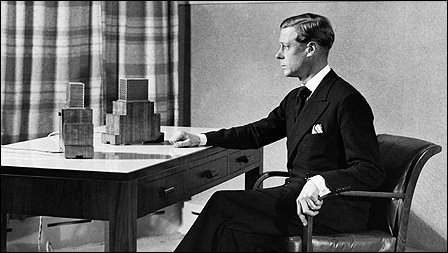
On 11 December 1936, Edward made a BBC radio broadcast from Windsor Castle; having abdicated, he was introduced by Sir John Reith as “His Royal Highness Prince Edward”. The official address had been polished by Churchill and was moderate in tone, speaking about Edward’s inability to do his job “as I would have wished” without the support of “the woman I love”. Edward’s reign had lasted 327 days, the shortest of any British monarch since the disputed reign of Lady Jane Grey over 380 years earlier. The day following the broadcast he left Britain for Austria. Image and Source : British Monarchist Foundation
Edward VIII - the Abdication Timeline
December 1936 Ballet Shoes by Noel Streatfeild
Noel Streatfeild was born in Sussex in 1895 and was one of three sisters. Although she was considered the plain one she ended up leading the most glamorous and exciting life! After working in munitions factories and canteens for the armed forces when WWI broke out, Noel followed her dream of being on stage and went to RADA where she became a professional actress.
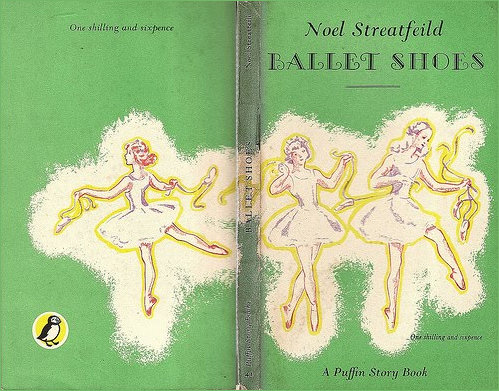
"Pauline, Petrova and Posy Fossil are sisters - with a difference. All three were adopted as babies by Great Uncle Matthew, an eccentric and rich explorer who then disappeared, leaving them in the care of his niece Sylvia. The girls grow up in comfort until their money begins to run out and nobody can find Great Uncle Matthew. Things look bleak until they hit on an inspired idea: Pauline, Petrova and Posy will take to the stage. But it's not long before the Fossils learn that being a star isn't as easy as they first thought..."
She began writing children's books in 1931 and Ballet Shoes was published in 1936. She quickly became one of the most popular authors of her day. When she visited Puffin exhibitions, there were queues right out of the building and all the way down The Mall. She was one of the first winners of the Carnegie Medal and was awarded an OBE in 1983. Noel Streatfeild lived in London. She died in 1986. Source : Penguin Books
The Ford Flathead V8 three-wheeler
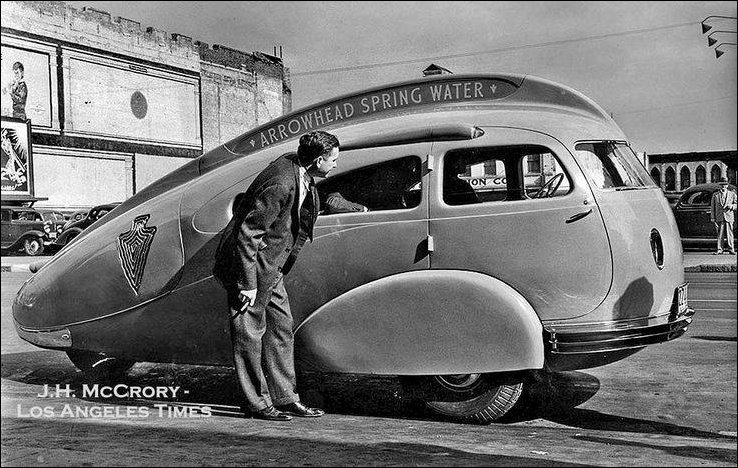
As showcased by J.H. McCrory of the Los Angeles Times and used by the Arrowhead Spring Water Company which is still going strong today.
2016 - 1936 Camper Van
A wonderful story has emerged about a Camper Van that was built in 1936 and has been fully restored following the death of the owner and his wife - I have prepared a condensed version with pictures but you can read the full story here:
A relic from the golden age of British holidays: Britain's first motorhome goes on sale for £40,000 (complete with empty grapefruit tins and Oxo cubes from the 1930s). The 'Pontiac Six' was shipped over from the US by Captain Dunn, from Bexhill-on-Sea, in 1935 for conversion. He asked coach builders to build a home in the back, which features kitchen with oven, sofa and dining room and has remained untouched since 40s but is perfectly preserved and still contains the maps he used to plan trips. Total mileage was only 10,000 miles and still drives well as the engine was turned over every few months by Mrs Dunn.
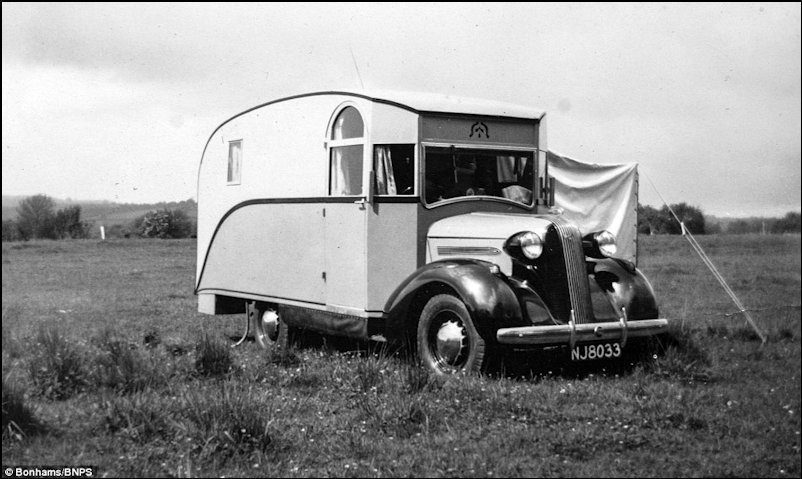
Off the road: The van is said to have been placed in a barn in the 1940s, raised on blocks with the spark plugs removed and oil tipped into the cylinder bores
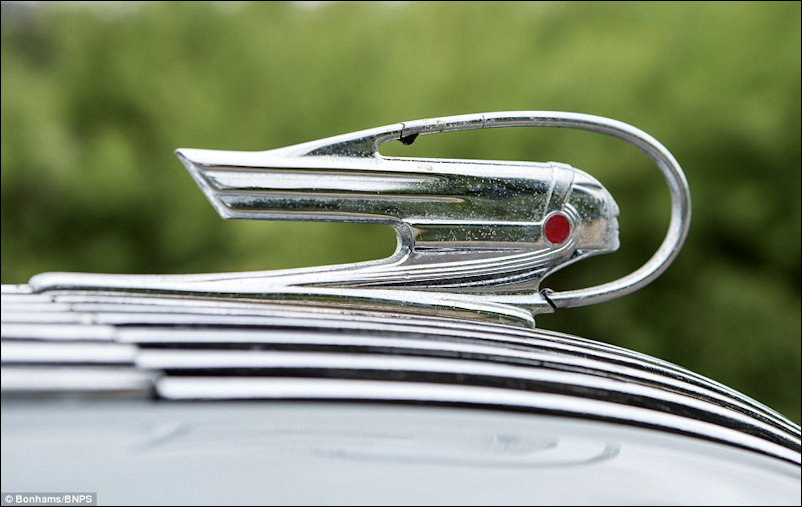
Crafted: Those who see it are always impressed with the craftsmanship of the motorhome, which people fawn over whenever it is taken to shows. Pictured is the badge on its front
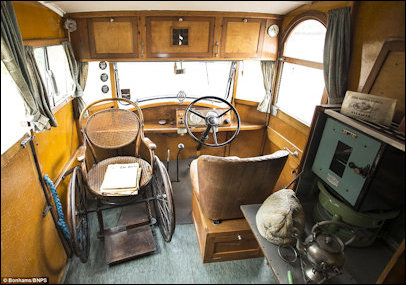
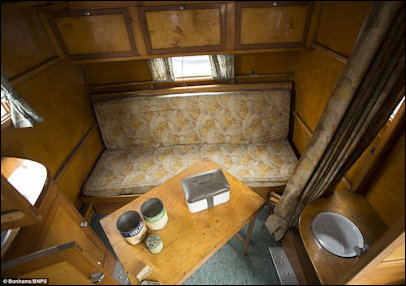
l to r - Modern living: The sophistication of the amenities on the inside is staggering. Food and drink preparation is carried out from the humble kitchen, where there is a gas oven (pictured, right), stove and two-litre water filter / Time capsule: Empty tins of grapefruit and Oxo cubes (pictured) from the 1930s can be found inside the cupboards and a box of 'Borwick's' baking powder is perched on top of the oven
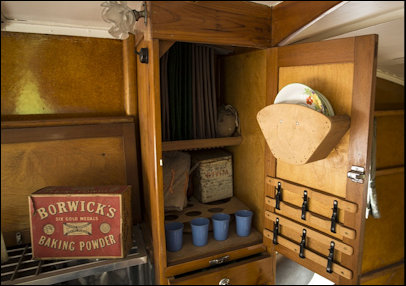
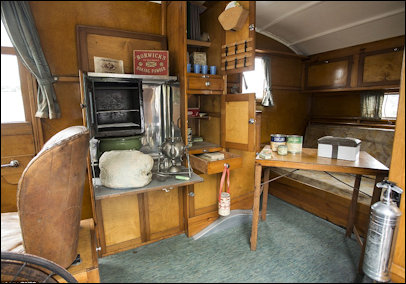
l to r - Perfectly preserved: The 80-year-old vehicle stands as a time-capsule in the 21st century, with original cutlery and crockery while brands from pre-war Britain are dotted around / Driving innovation: The unique vehicle was created by naval aristocrat Captain Dunn, from Bexhill-on-Sea, who shipped a Pontiac Six chassis over from America in 1935 and tasked local coach builders to built a home on the back
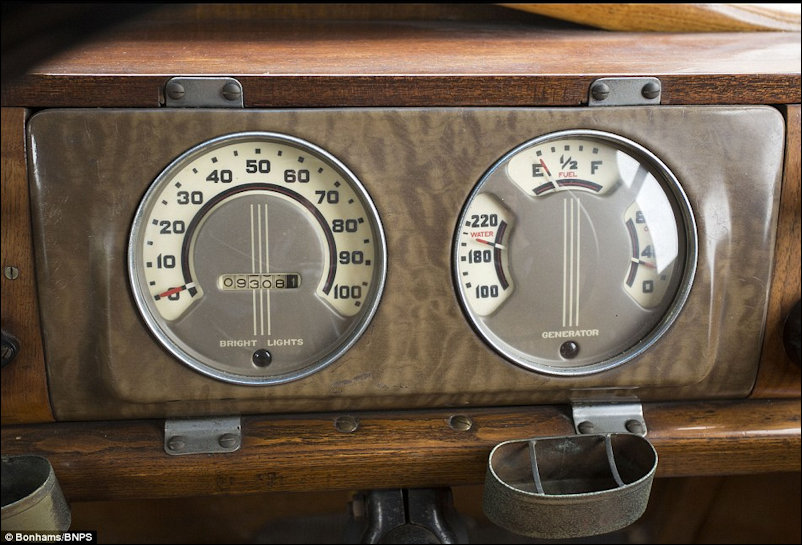
Like new: The motorhome has done less than 10,000 miles (pictured on the dial, left) since it was made 80 years ago
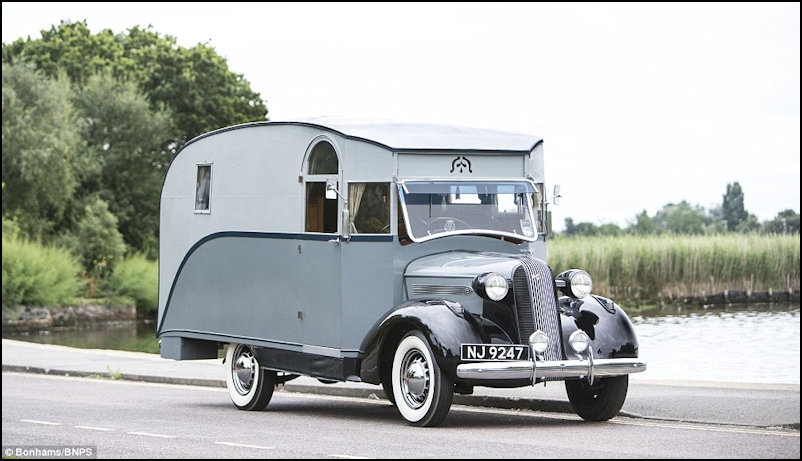
Classic : An 80-year-old motorhome believed to be the first ever built in Britain is expected to fetch £40,000 when it goes up for auction
All images of the Pontiac Six are courtesy and © of Bonhams/BNPS
An 80-year-old motorhome believed to be the first ever built in Britain is expected to fetch £40,000 when it goes up for auction. The unique vehicle was created by naval aristocrat Captain Dunn, from Bexhill-on-Sea, who shipped a Pontiac Six chassis over from America in 1935 and tasked local coach builders to build a home on the back. He then set off into the British countryside behind the wheel but it has remained untouched since Dunn died in the 1940s.
The sophistication of the amenities on the inside is staggering considering it was constructed 80 years ago, boasting the same facilities as a 21st century campervan. Food and drink preparation is carried out from the humble kitchen, where there is a gas oven, stove and two-litre water filter. Sleeping quarters are located at the rear, where the sofa pulls out in to a double bed. There is even a lavatory and the interior is clad with elegant mahogany wood.
The 80-year-old vehicle stands as a time-capsule in the 21st century, with original cutlery and crockery while brands from pre-war Britain are dotted around. Empty tins of grapefruit and oxo cubes from the 1930s can be found inside the cupboards and a box of 'Borwick's' baking powder is perched on top of the oven.
The renovation was carried out by Russell's Coachworks of Bexhill, who were more accustomed to constructing horse drawn fire engines. The blend of American and English styles is clear to see when looking at the finished product, the front end adopting Art Deco, while the rear exemplifies old English. The four-litre motor, which tops out at 50mph, has done under 10,000 miles. Capt Dunn initially made good use of the motorhome and his travels through southern England in the late 1930s are documented in four photo albums that come with the purchase. The travel guides he is thought to have used to plan his journeys are also contained within a drawer in the living area.
Hoover Dam completed 1931/6
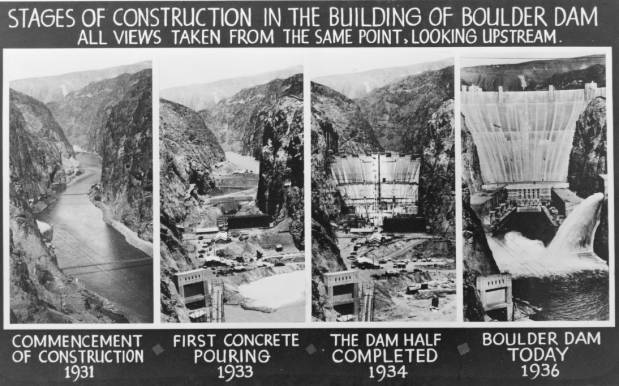
Progress from 1931 to 1936 - image courtesy of the Pandora Society
Philco Radios Factory opens in Perivale 1935/6
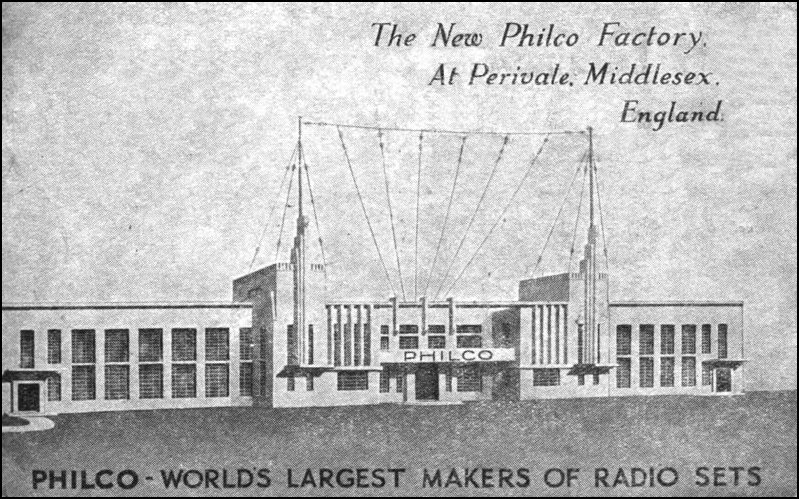
Architects sketch for the new Philco building which started being built in 1935
Company History
Philco’s roots date back to 1892 when the Heilos Electric Company was founded in Philadelphia. Its primary product then was the storage battery, and in 1906 the company changed its name to the Philadelphia Storage Battery Company and adopted the abbreviated name Philco. Its history as an exporter goes back as far back as 1916 when it began exporting Philco batteries to Great Britain and Latin America under the Philco trademark.
Several significant dates and events marked Philco’s place in the appliance industry. Here are some of them:
1920’s and 1930’s:
Business expanded so rapidly that subsidiaries were established and production licenses issued around the world. Argentina, Canada and Great Britain became productive extensions of the Philco name. Philco became famous for that period included the first hermetically sealed room air conditioner and the use of foam in refrigerator insulation. Source : Philco International
Still standing in 2015
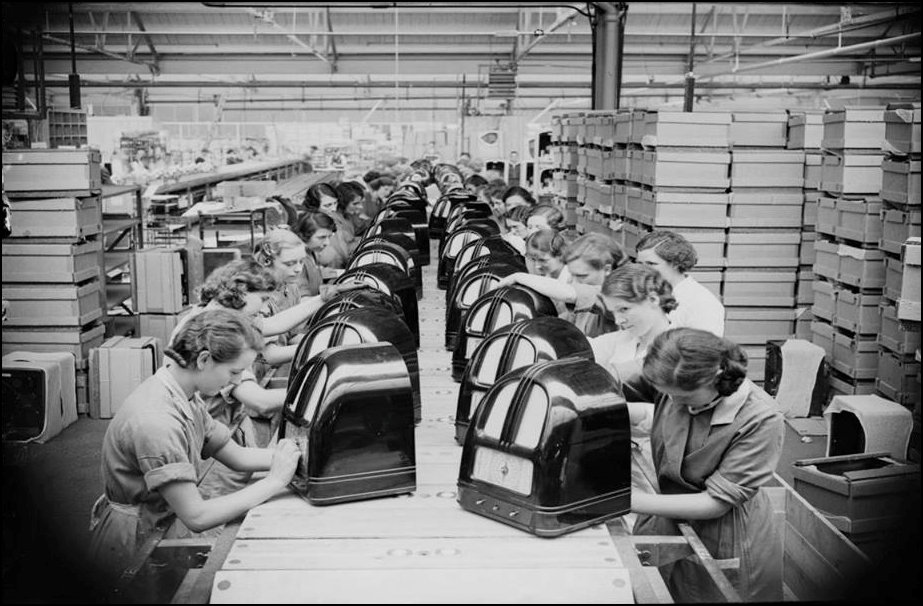
The photo caption read: Putting the finishing touches to a batch of the new Philco 'People's Radio' in the Philco factory at Perivale in Middlesex. Women workers at Perivale Philco radio factory, Middlesex, 20 April 1936.
Workers at Perivale Philco radio factory, London, 31 August 1936. One of a series of photographs taken by Daily Herald staff photographer, Edward G. Malindine, during a visit to the new production line at the Philco Radio & Television Corporation factory in Perivale in London. The radio was designed to be mass produced so that the price could be kept down to six guineas ( £6 6s 0d). The cabinet was made from moulded Bakelite, which was the first plastic to be used for making radios. Bakelite was a plastic formed when phenol formaldehyde was combined with a wood flour filler. It was a useful mouldable plastic, with very good electrical insulating properties. Its trade name 'Bakelite' was derived from the name of its inventor, Leo Baekeland.
Lucky Perivale to have such wonders built there
Well - that's what I thought when I found the Philco factory images - I already knew that Hoover had built their (dare I say it) iconic building there now owned by Tesco and thriving - and the Philco building, although now owned/leased by Playwell was doing well until 2015 when the dream went up in flames!
Extract from ealing.gov.uk
The population of Perivale, before the twentieth century, was tiny. In 1664 and in 1841, there were only five inhabited buildings. These were the farm houses; Horsenden Farm to the northwest, Grange Farm and Church Farm in the southwest, Manor Farm to the east and Alperton farm to the north. Only 28 people lived in Perivale in 1801 and in 1901, only 60. The major development in transport was the coming of the roads. These were Greenford Road, which ran north to south and the Western Avenue, built in the 1930s. Because Perivale had so few buildings, was so close to central London and now had such excellent transport links (canal, rail and road), it seemed ideal for new buildings, both industrial and residential.
Many factories were built in Perivale between 1930 and 1939. They centred on the Western Avenue, Horsenden Lane and the branch Paddington Canal. There was also industrial building to the north of the railway line and in and around Wadsworth Road and Bideford Avenue. One of the first factories, which was built in 1929, was Sanderson Wallpapers Ltd. When they opened, they employed 900 people. By 1963, they employed 1650 people and their premises had expanded to ten acres. Perhaps the most famous factory is that facing the Western Avenue, which was opened in 1932 by Hoover Ltd. They sold vacuum cleaners and other household appliances. By 1963 they employed more than 3000 people. In 1982, they closed but the art deco building was preserved, being used by the supermarket Tesco's. Both Sanderson's and Hoover's were, in the 1930s, thought to be model factories, in which the workers enjoyed good working conditions. Apart from the building of factories, many houses were also built. Much of this initially occurred to the north of the Western Avenue and between the railway line and the canal.
Page refreshed : 2nd August 2019 (G)